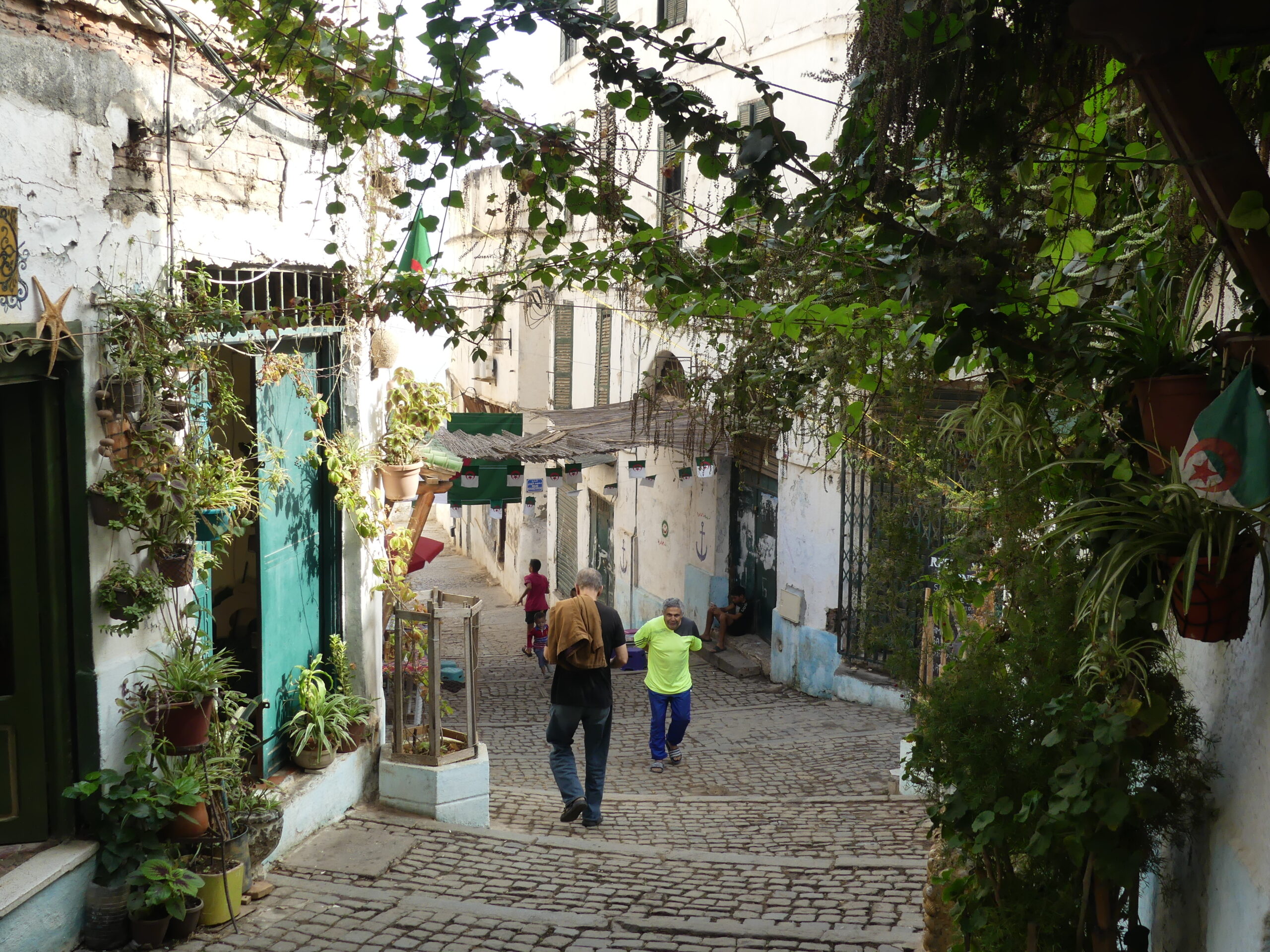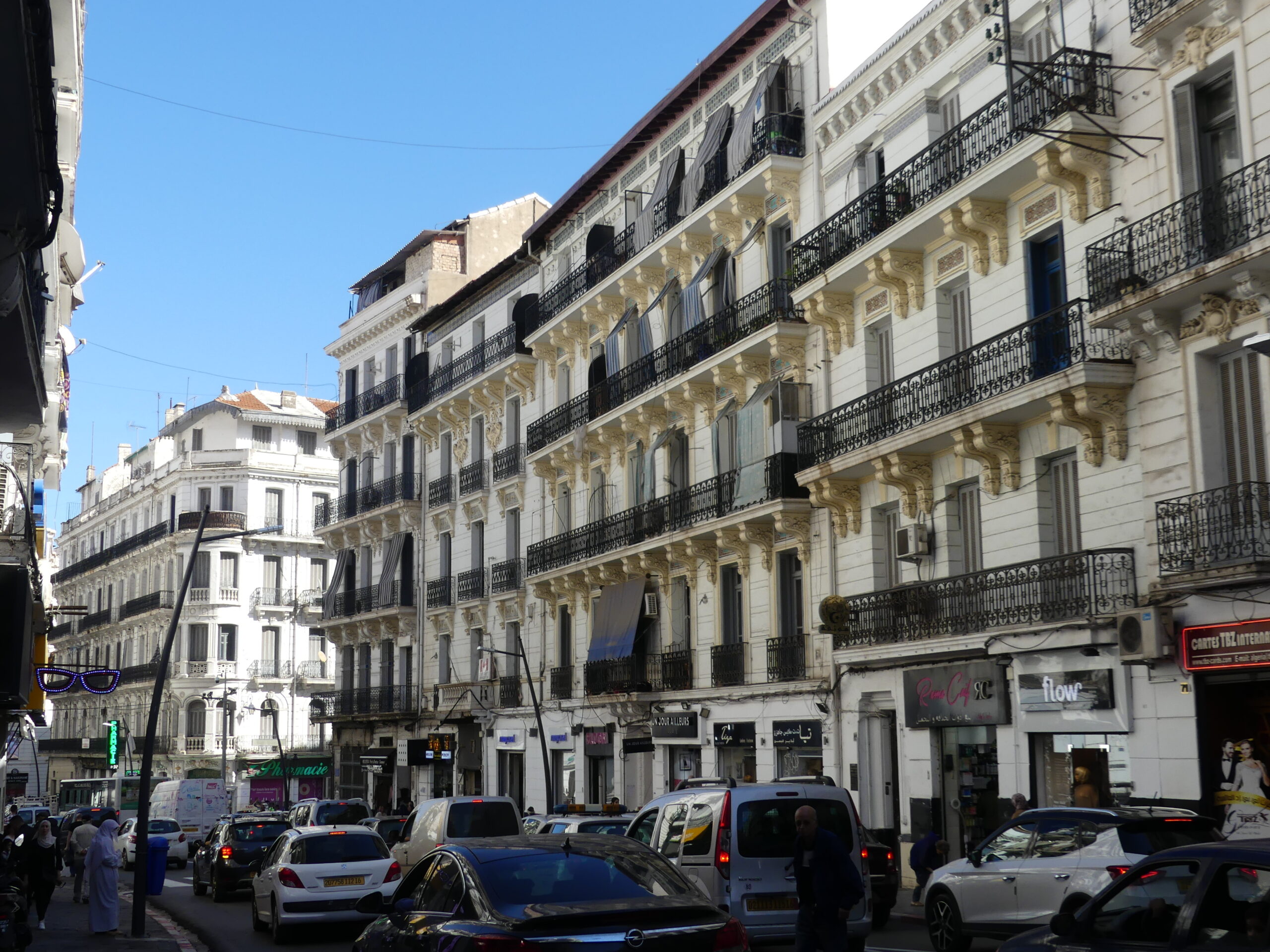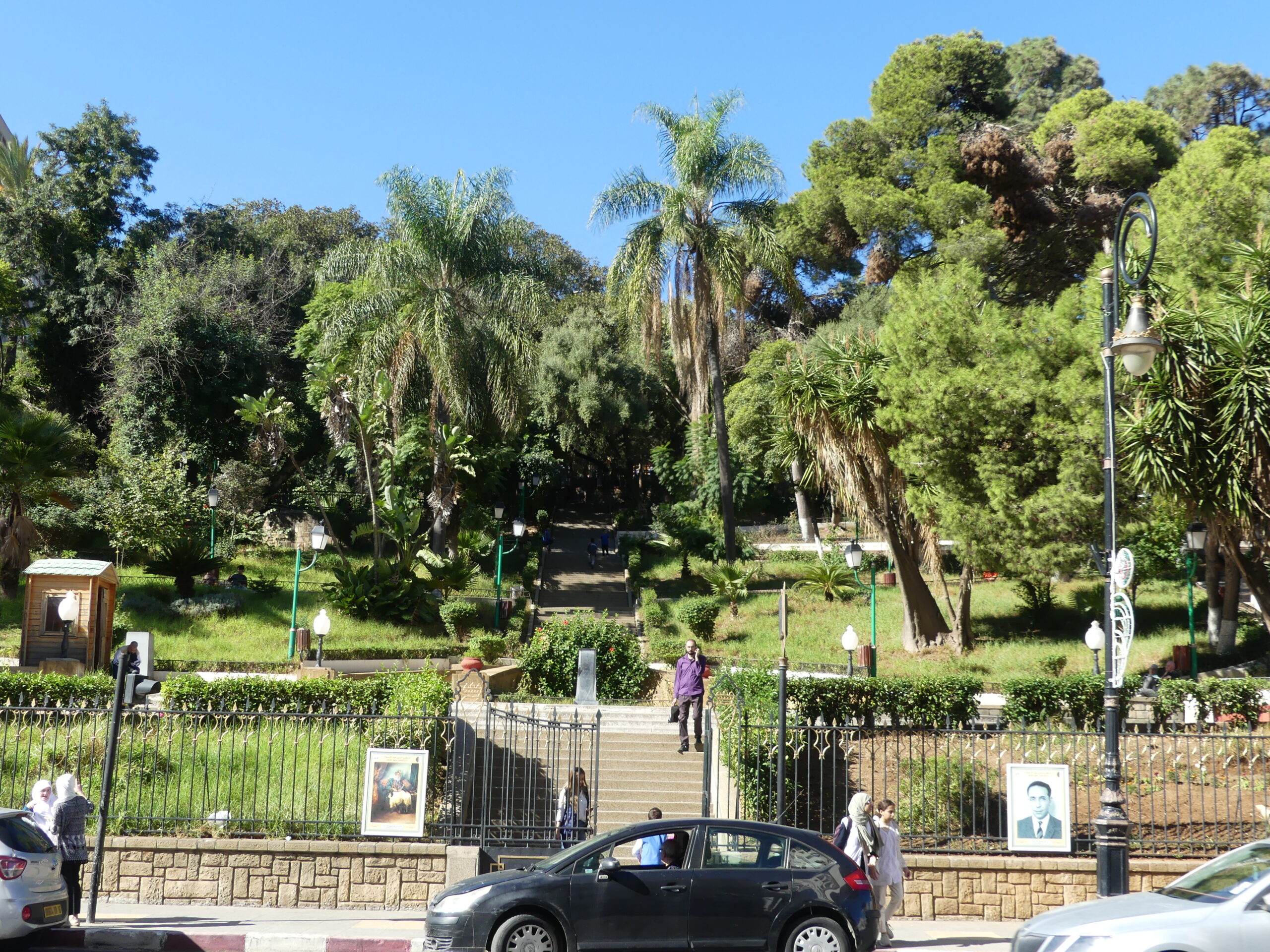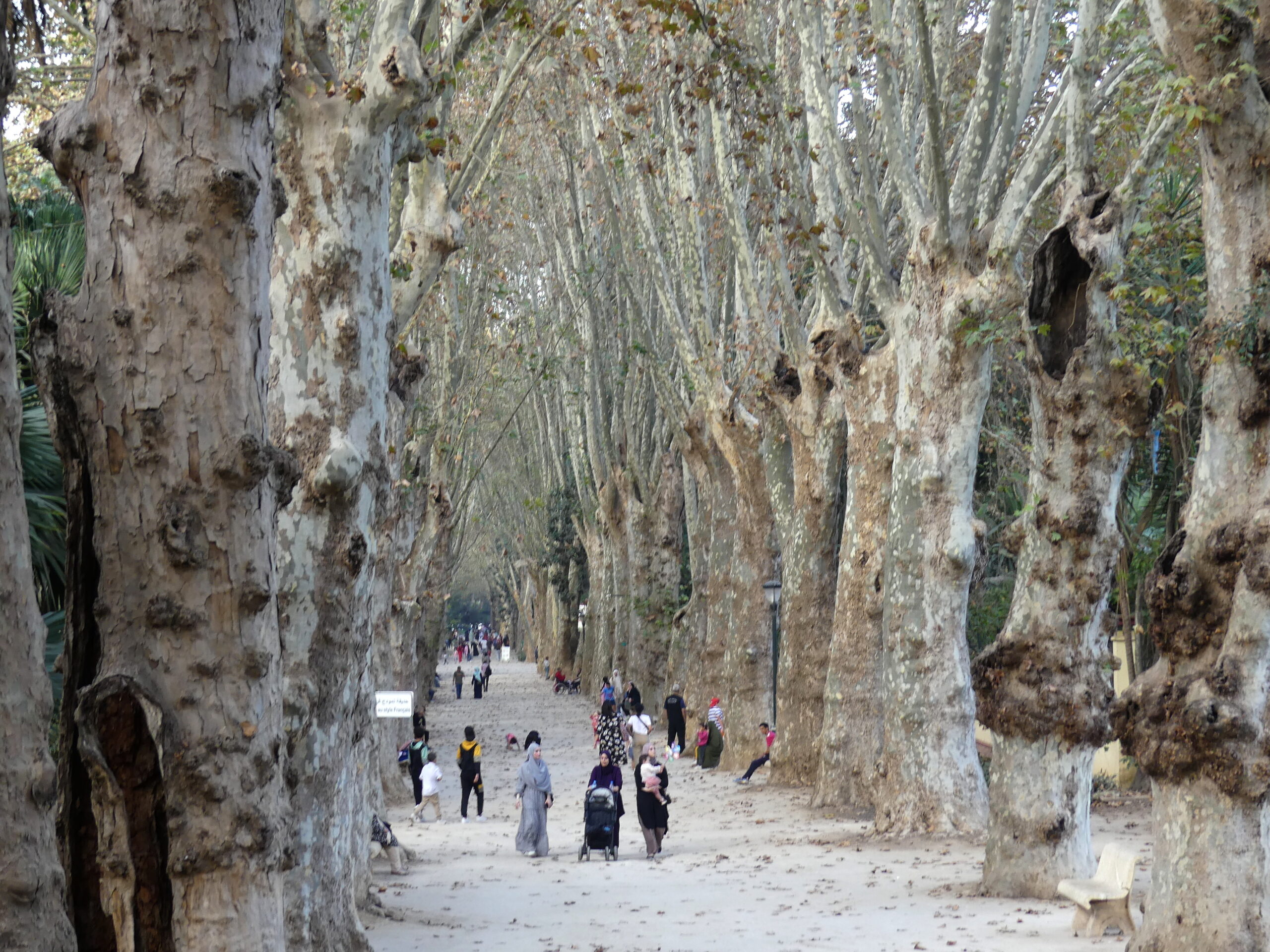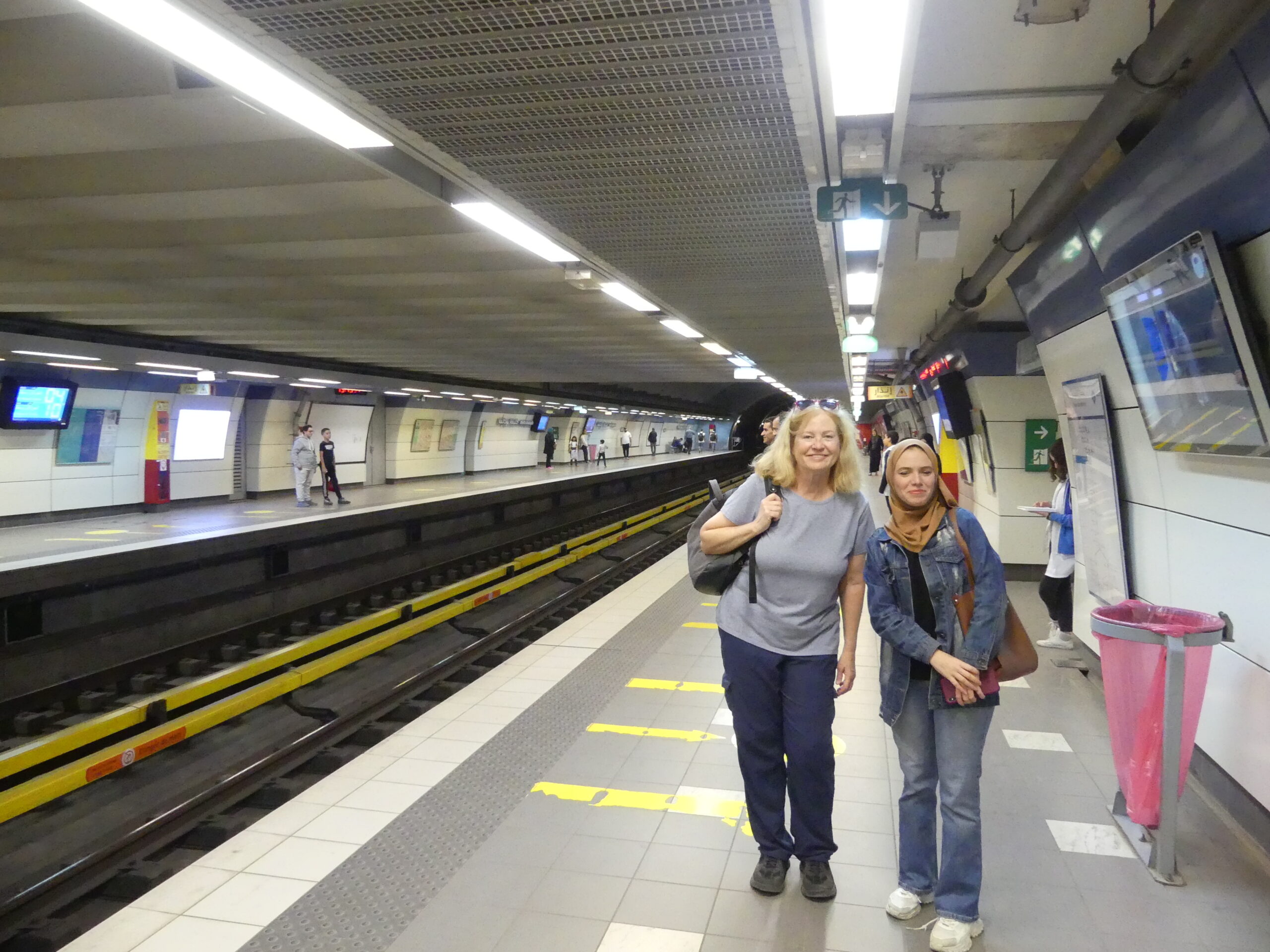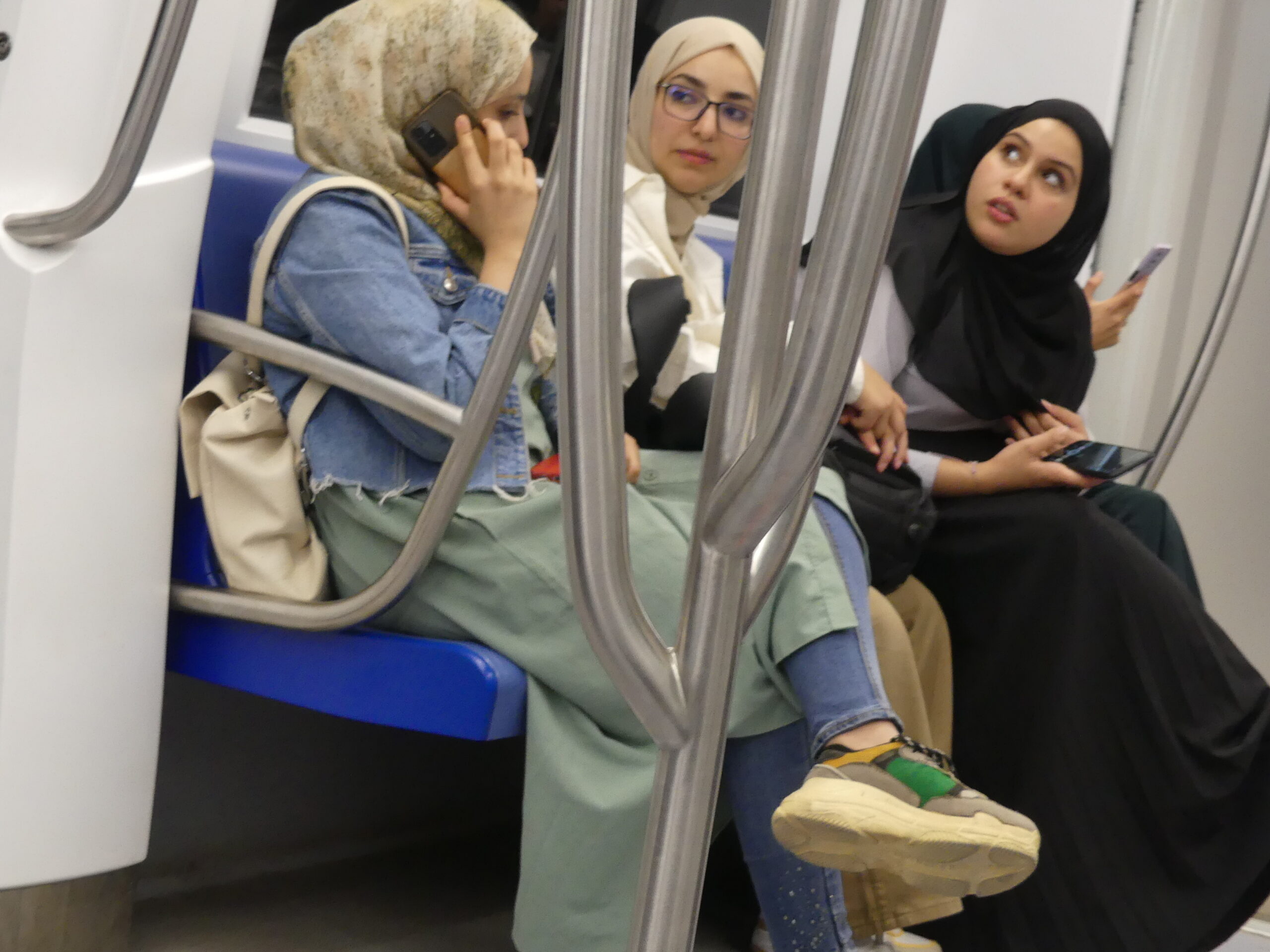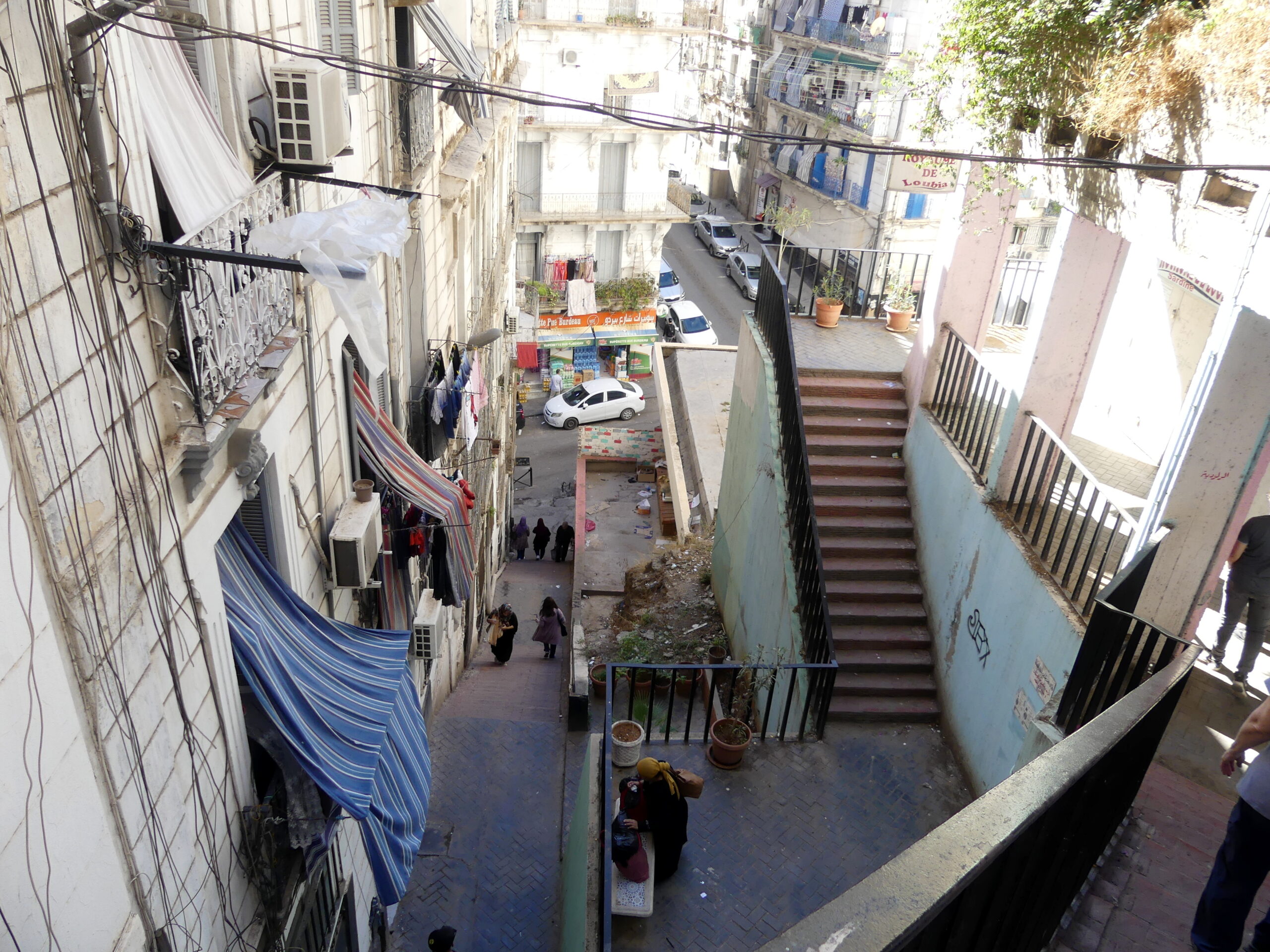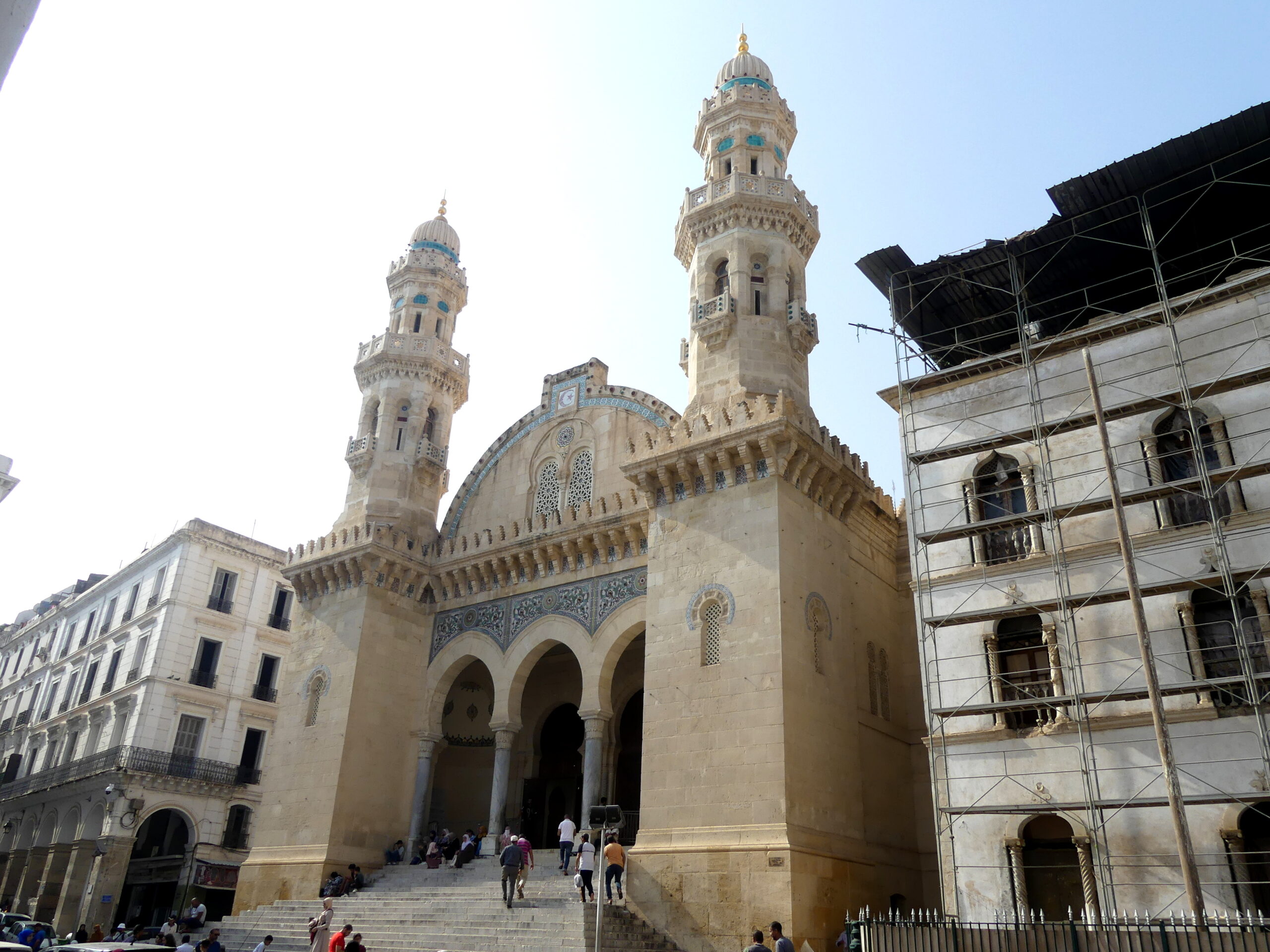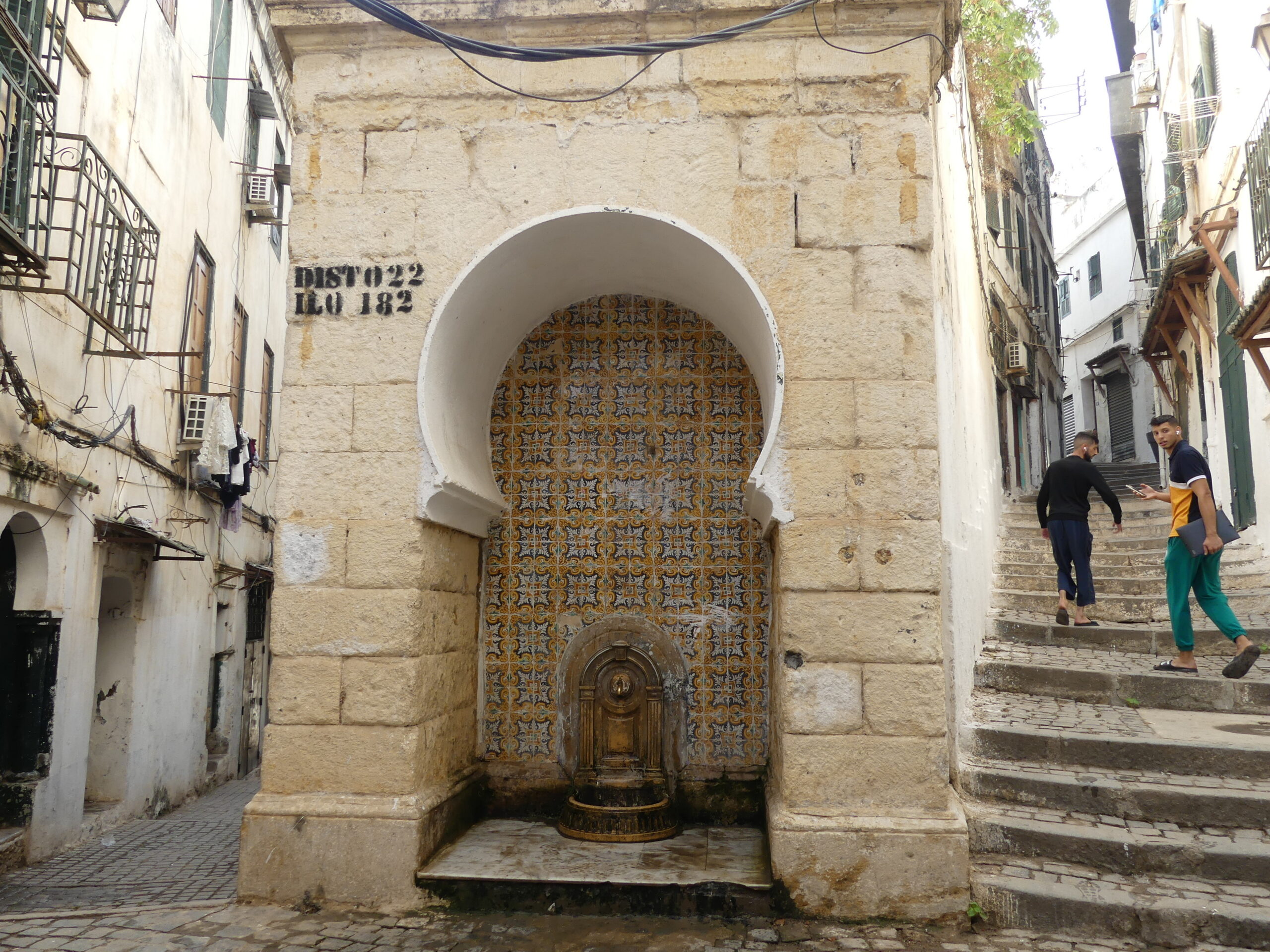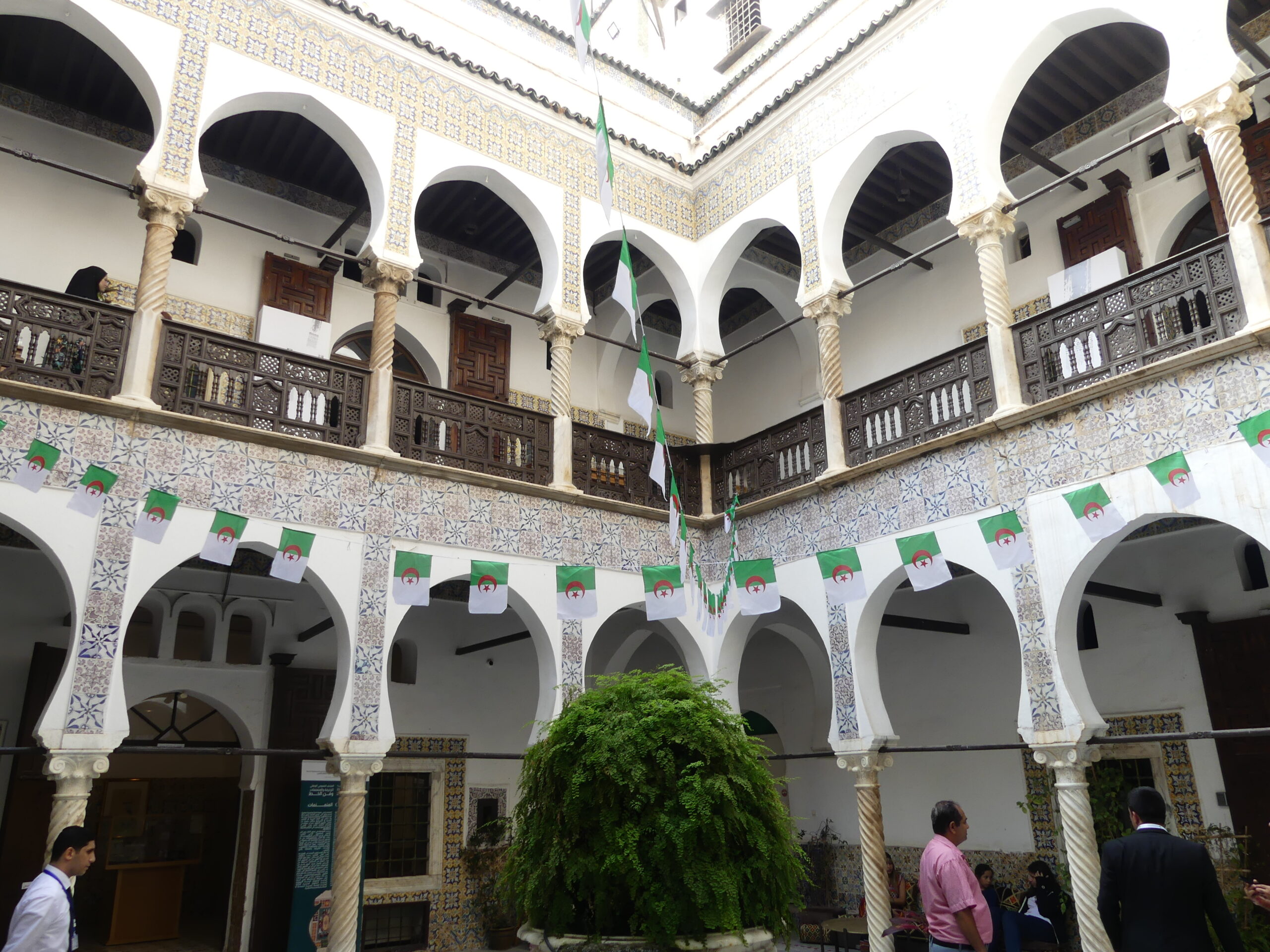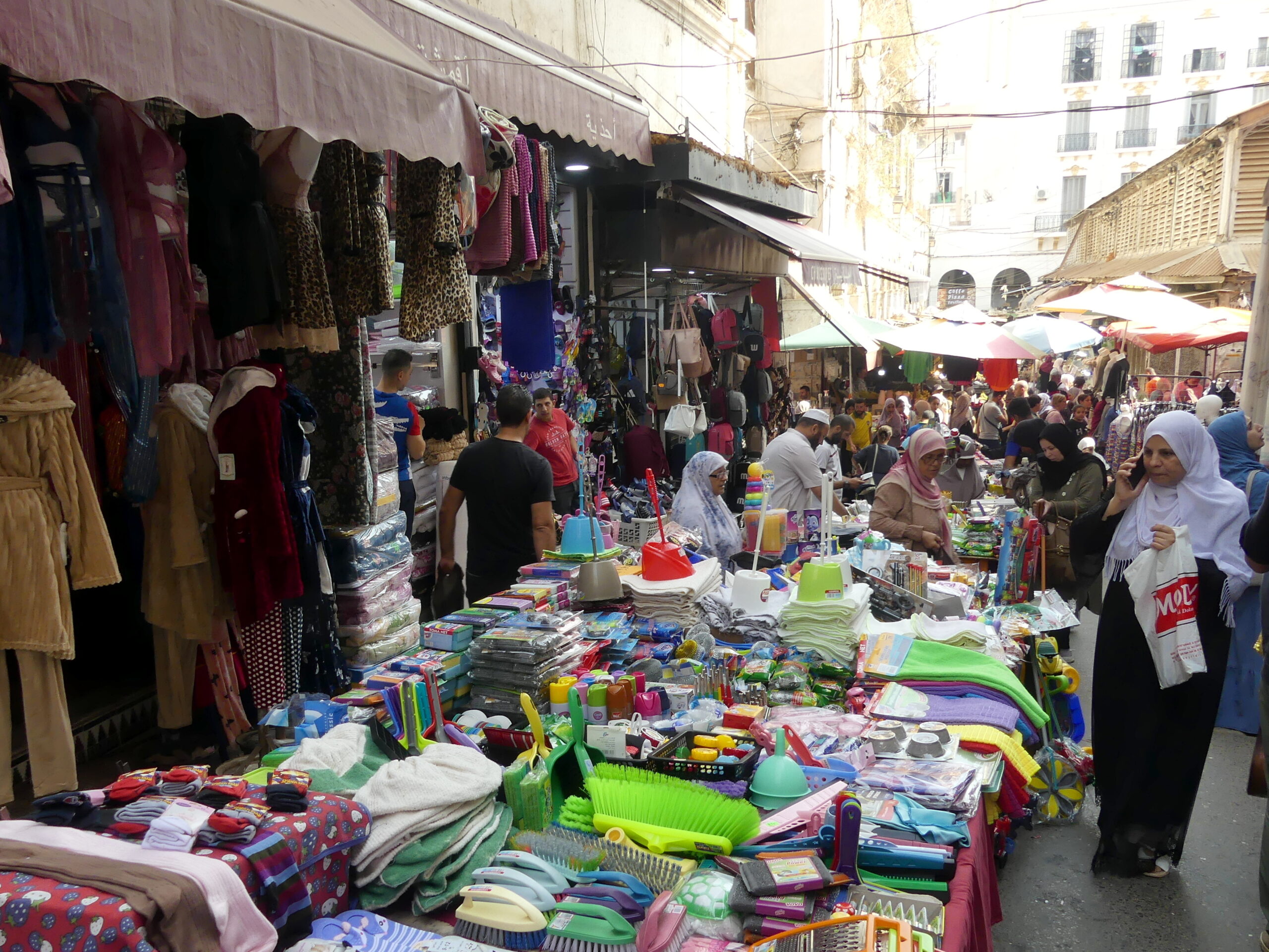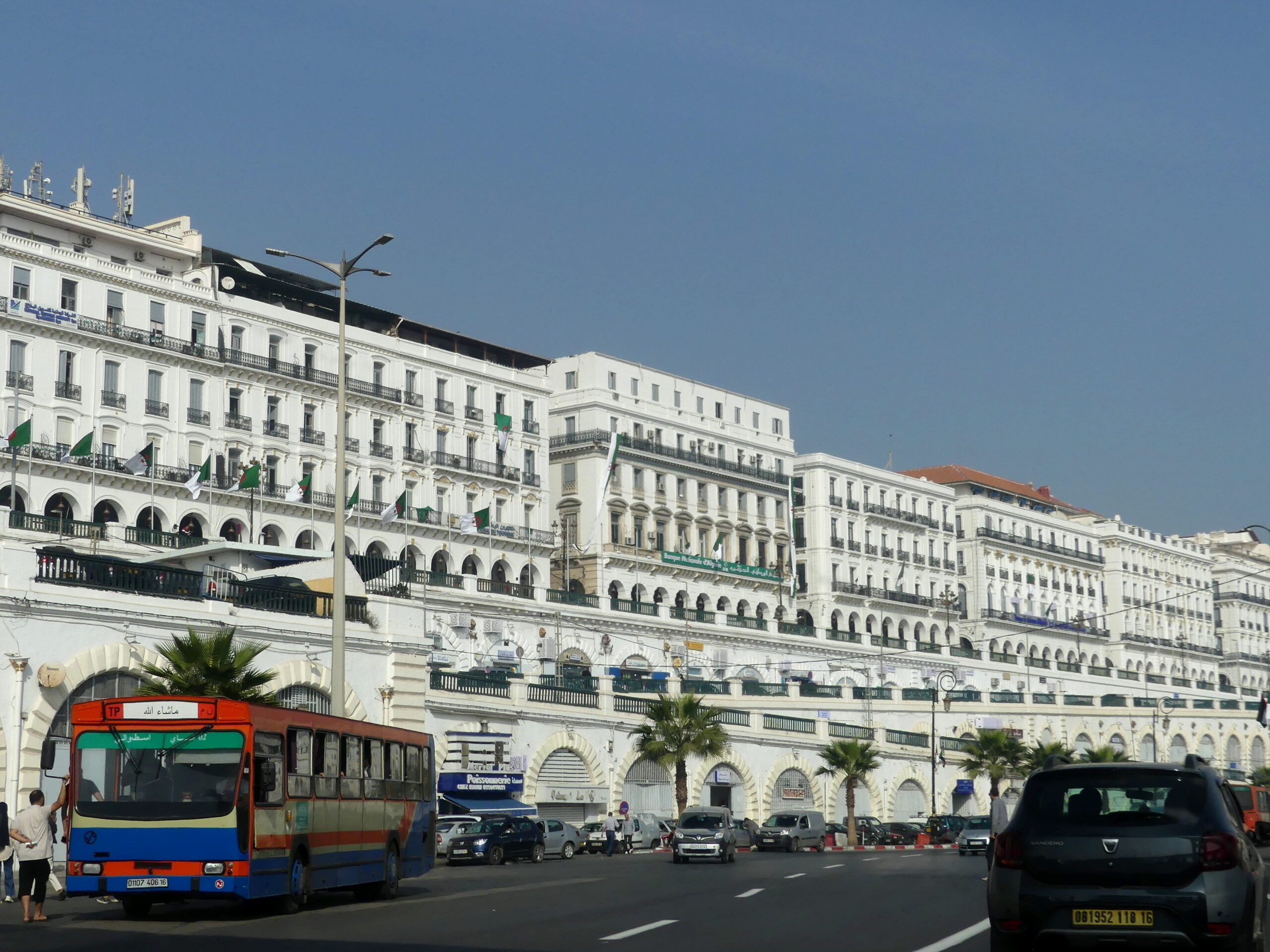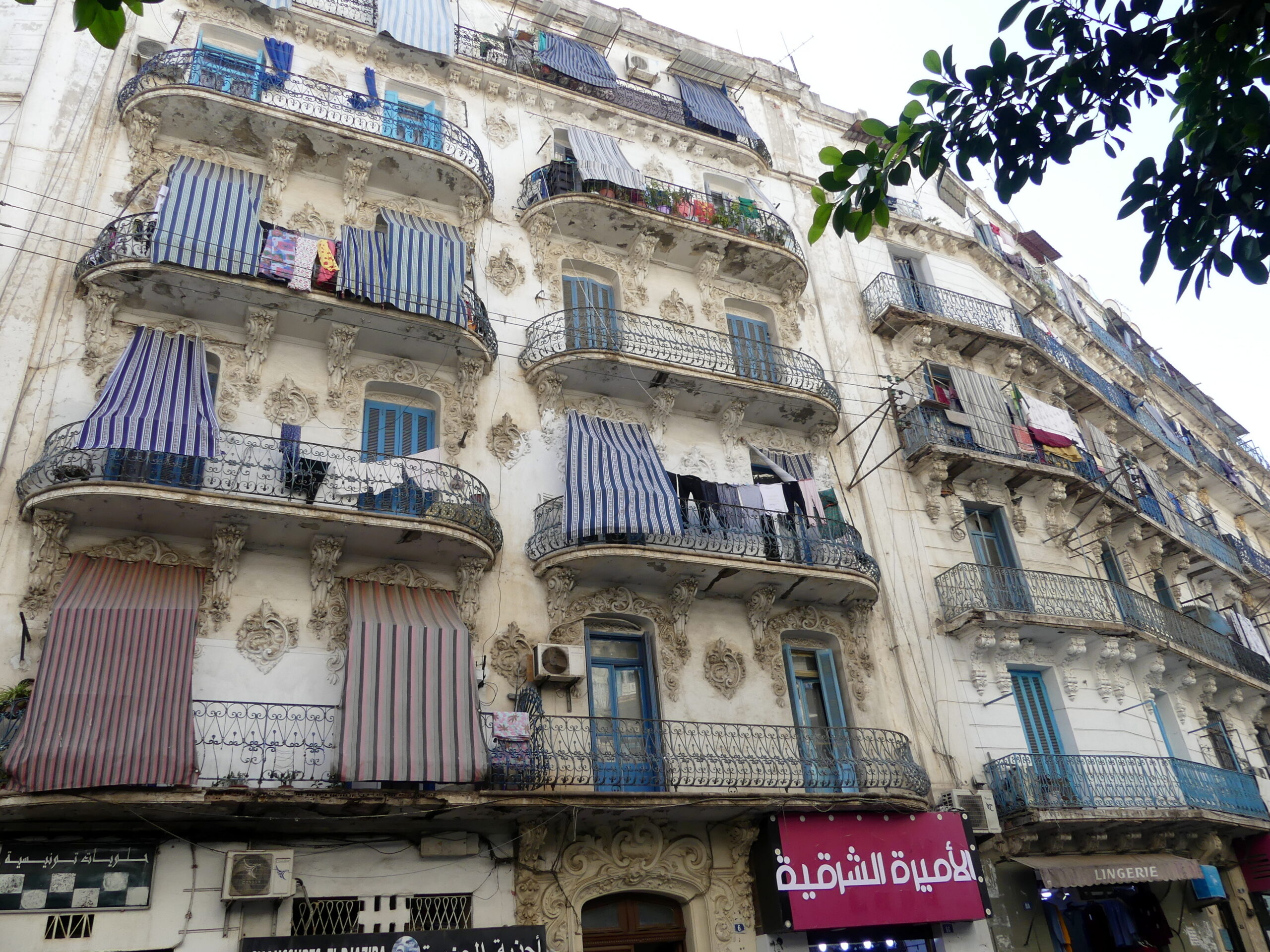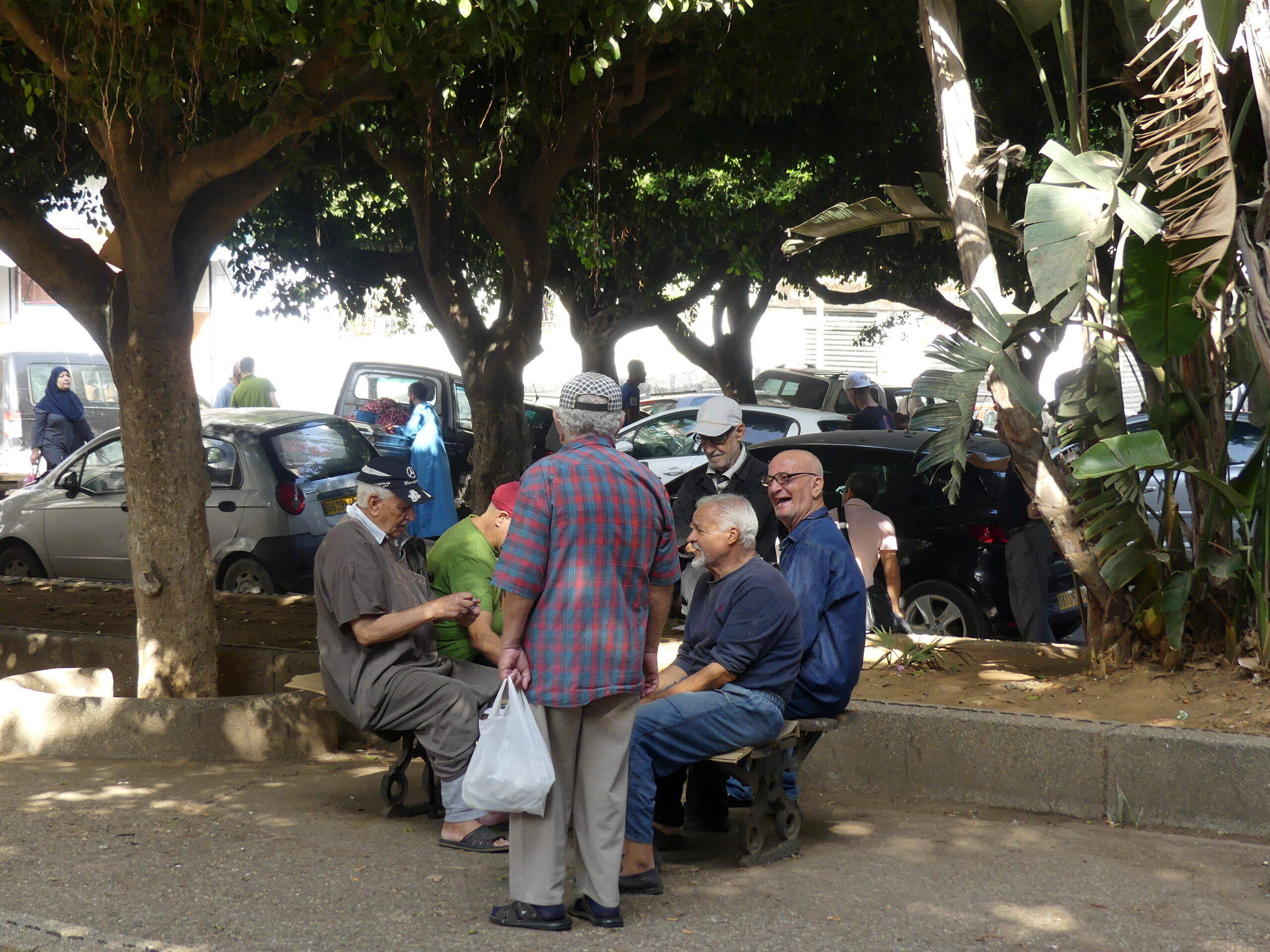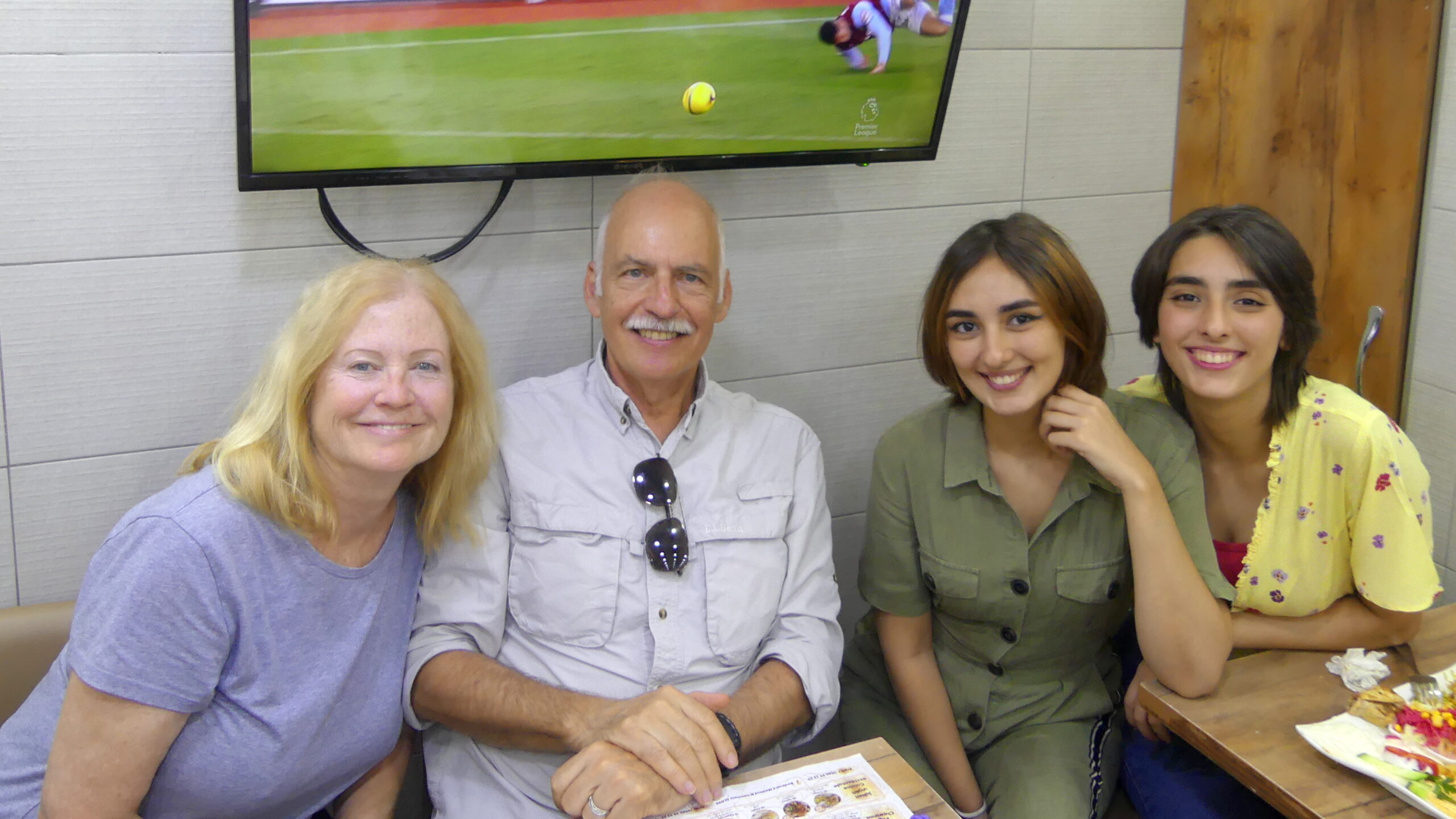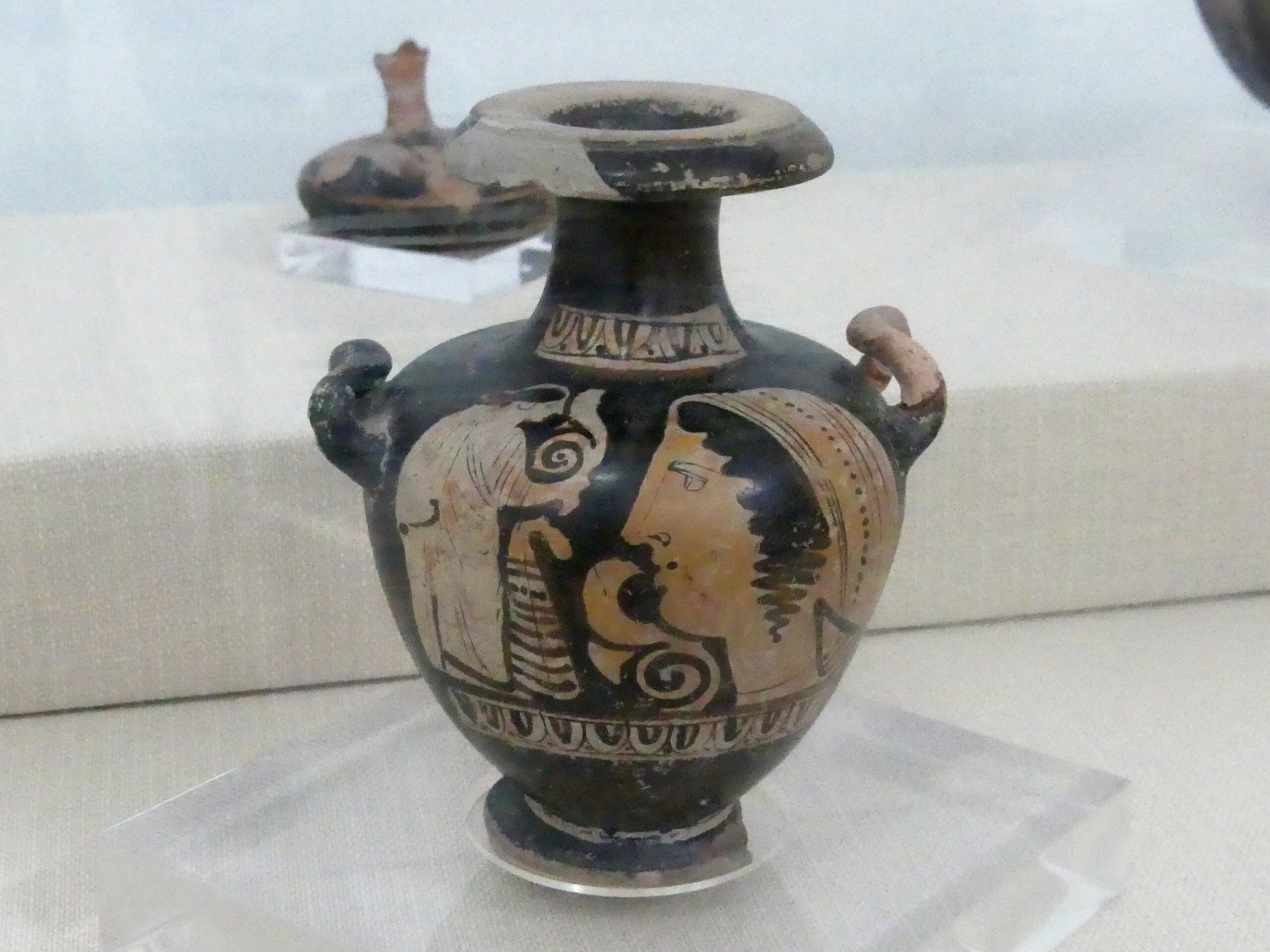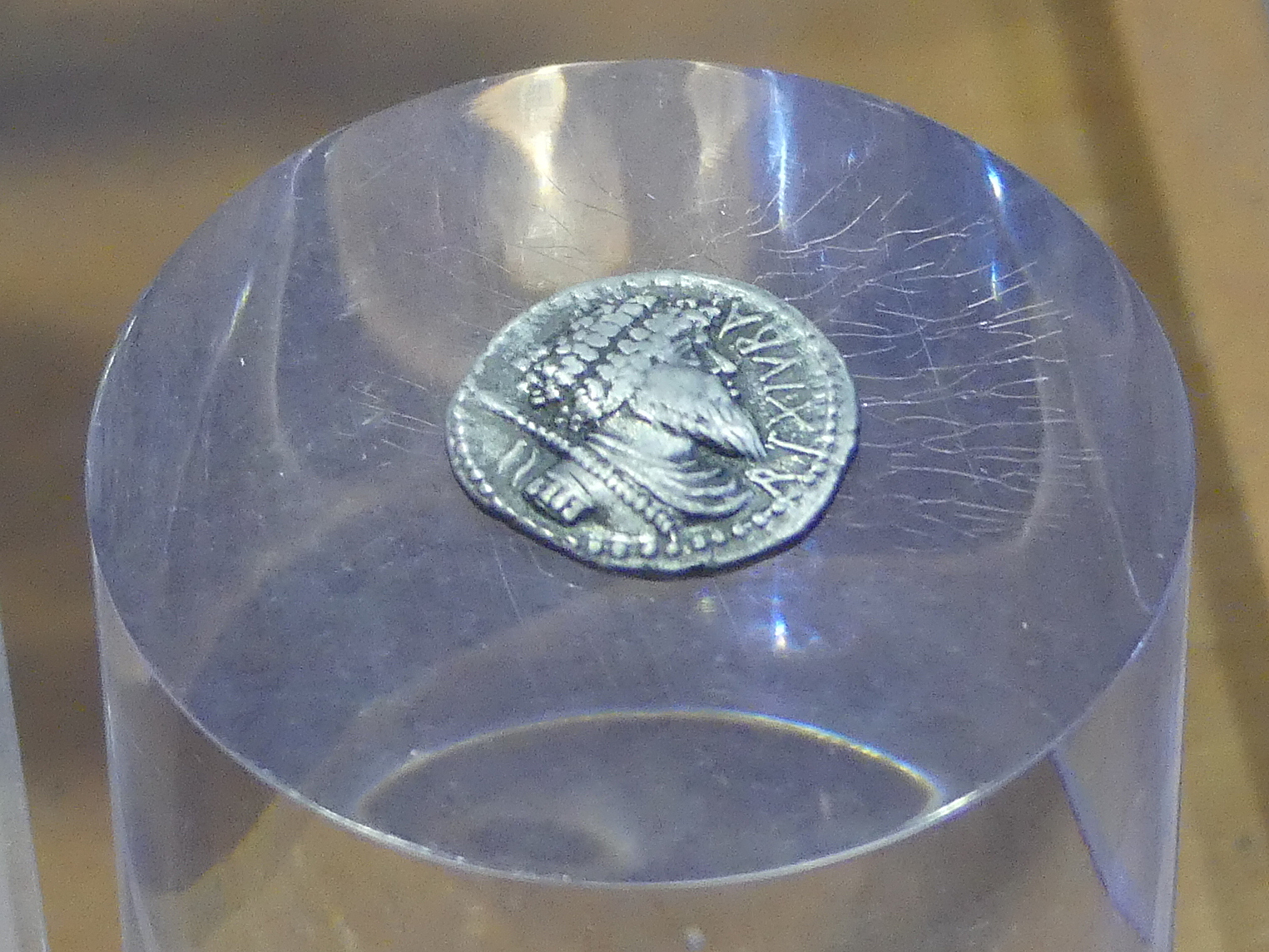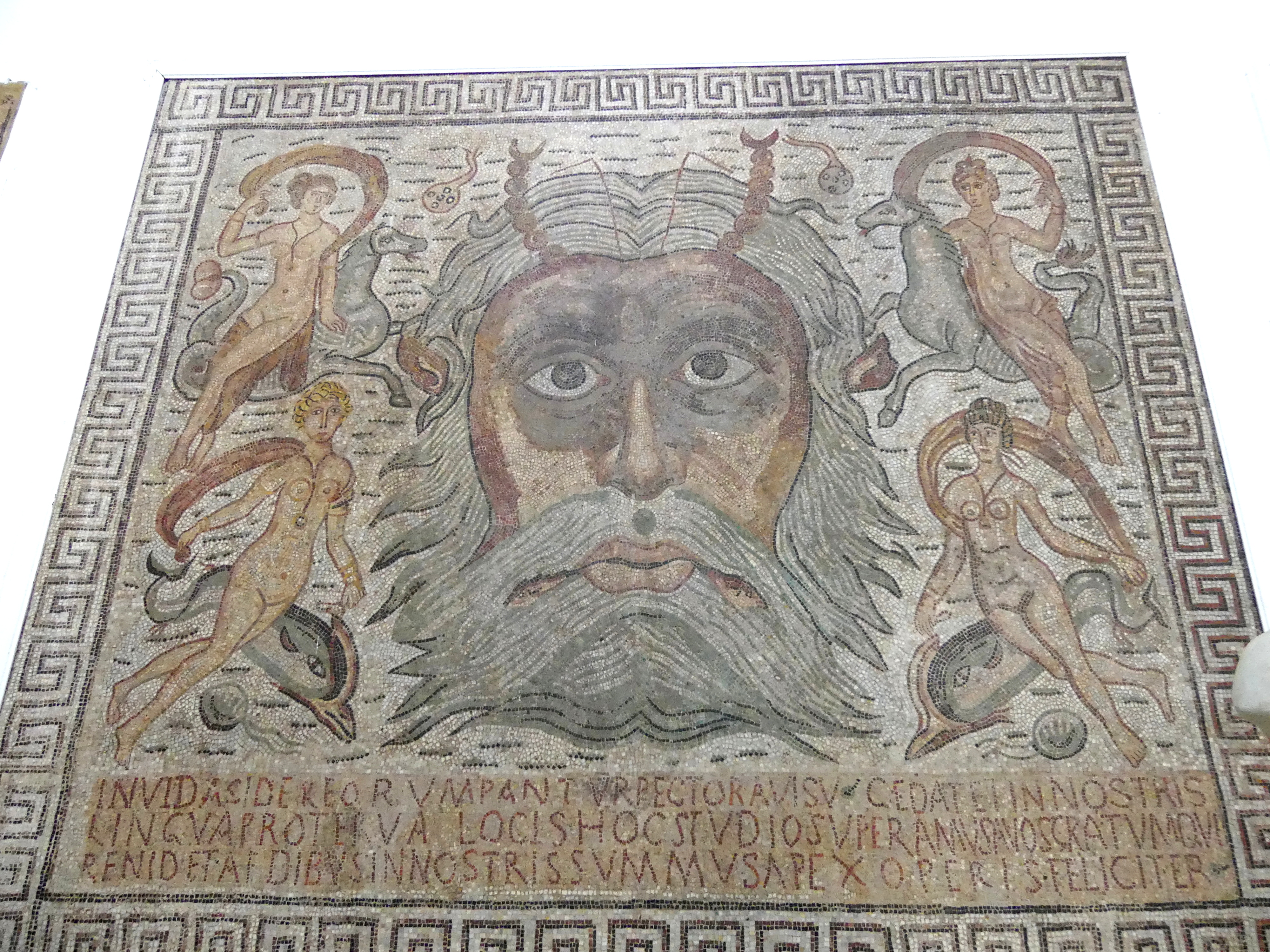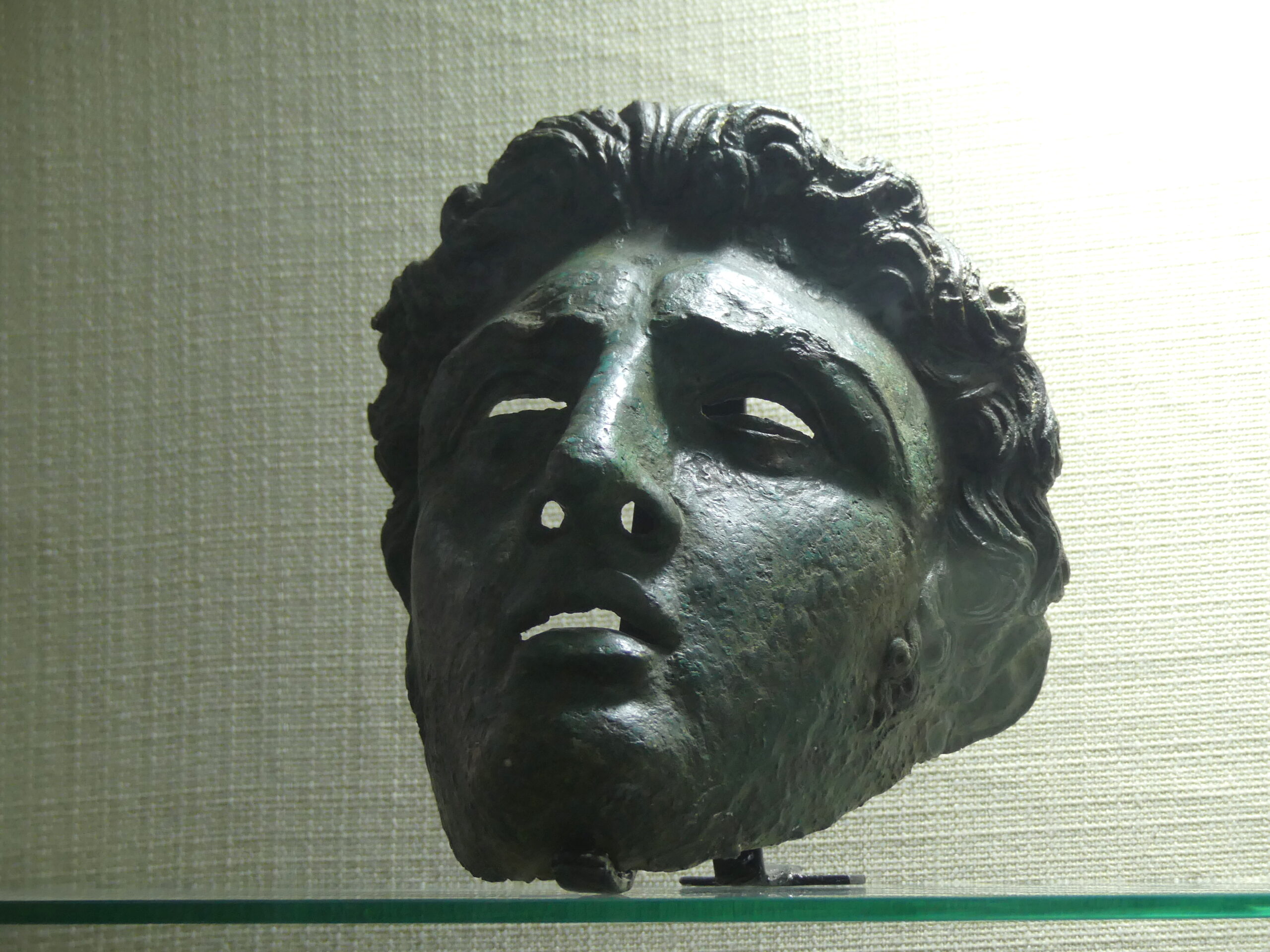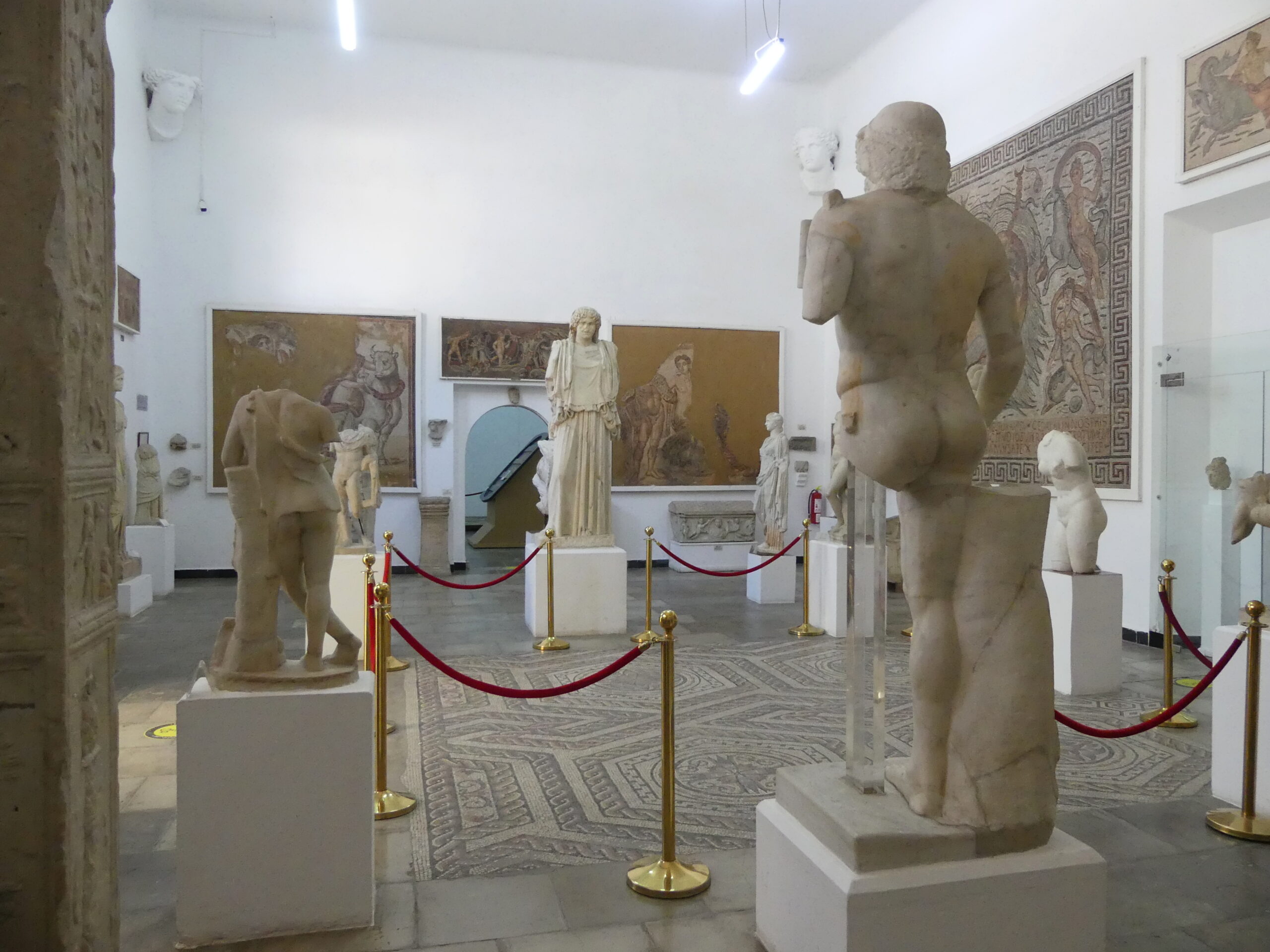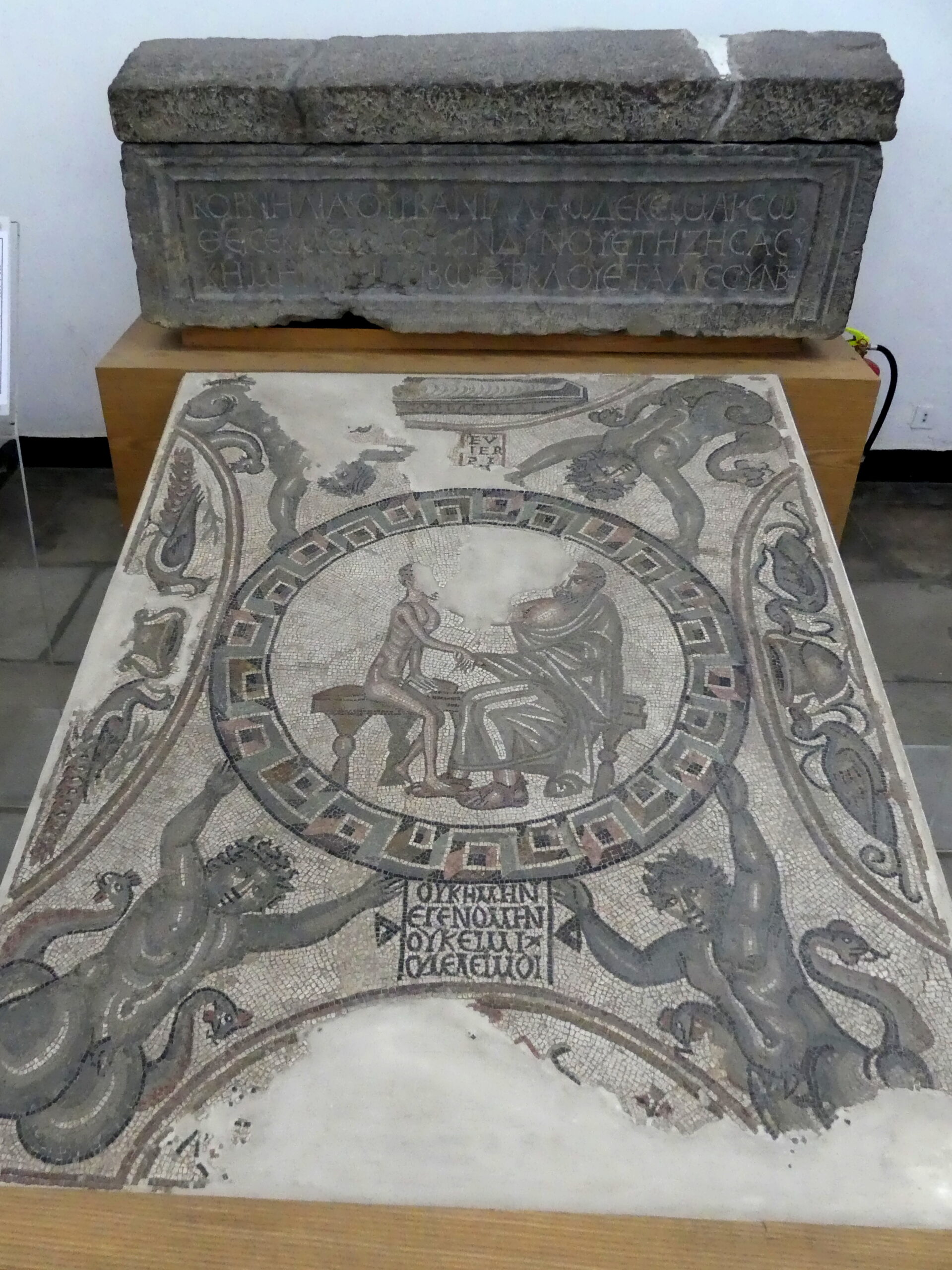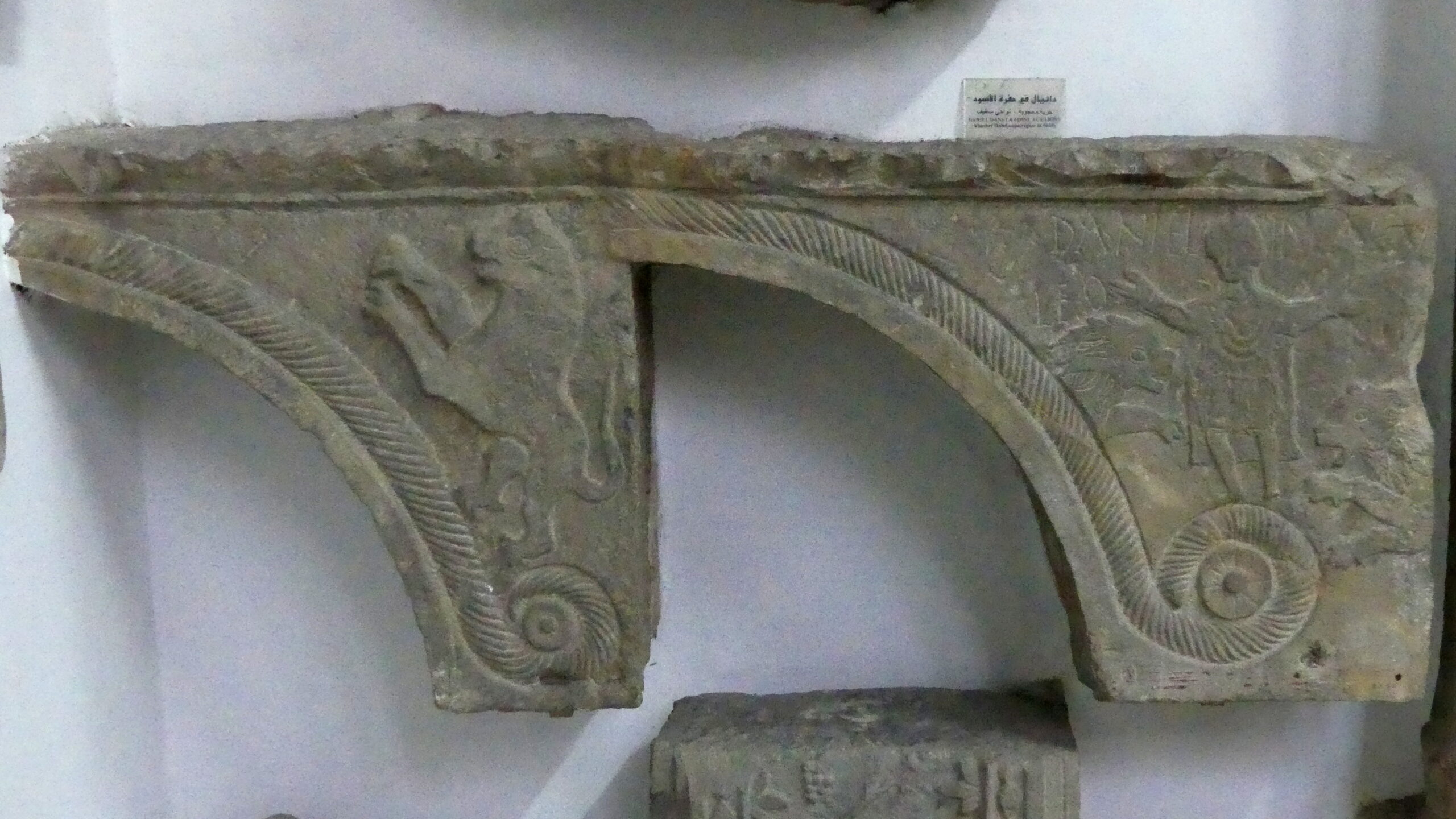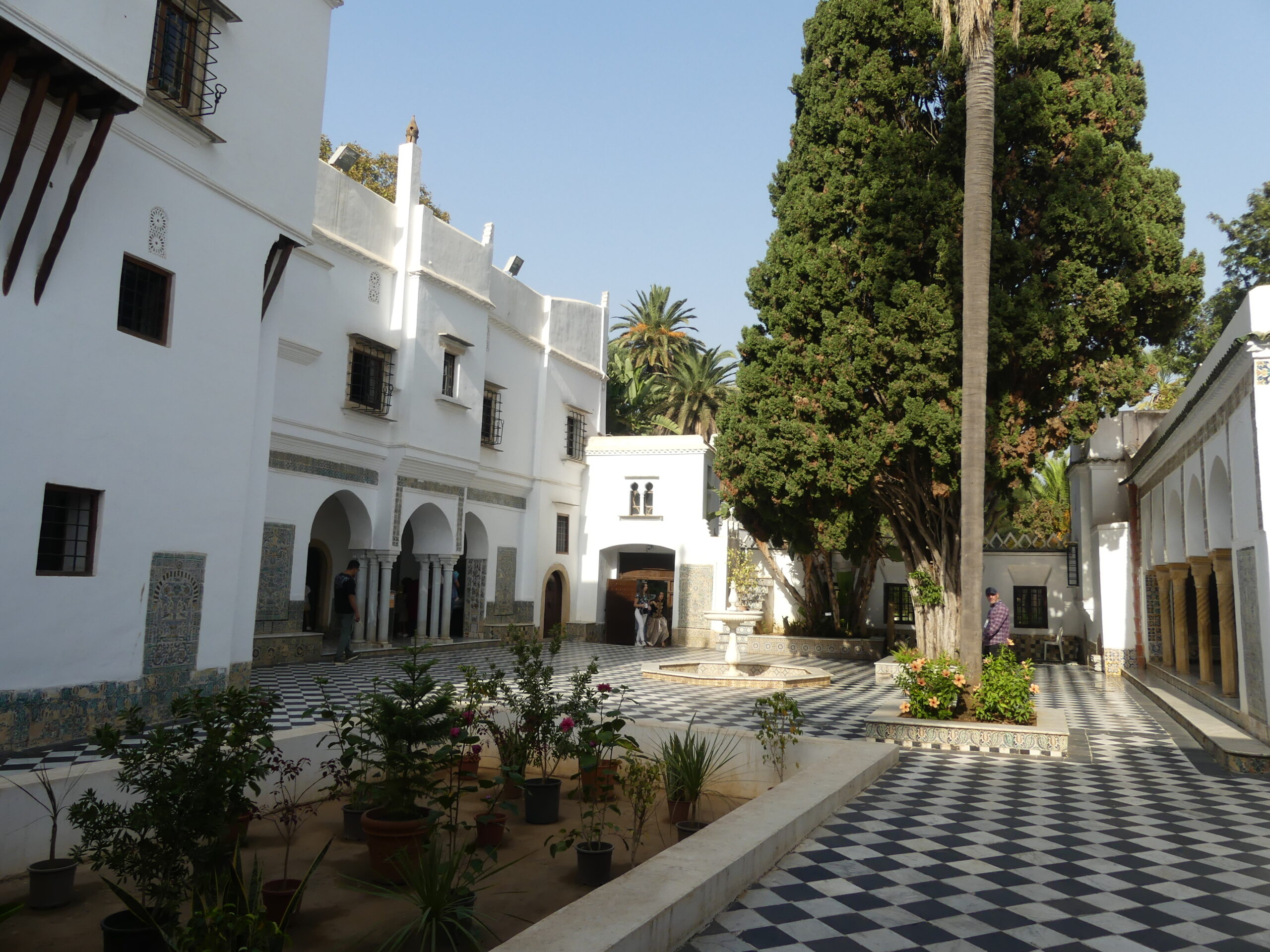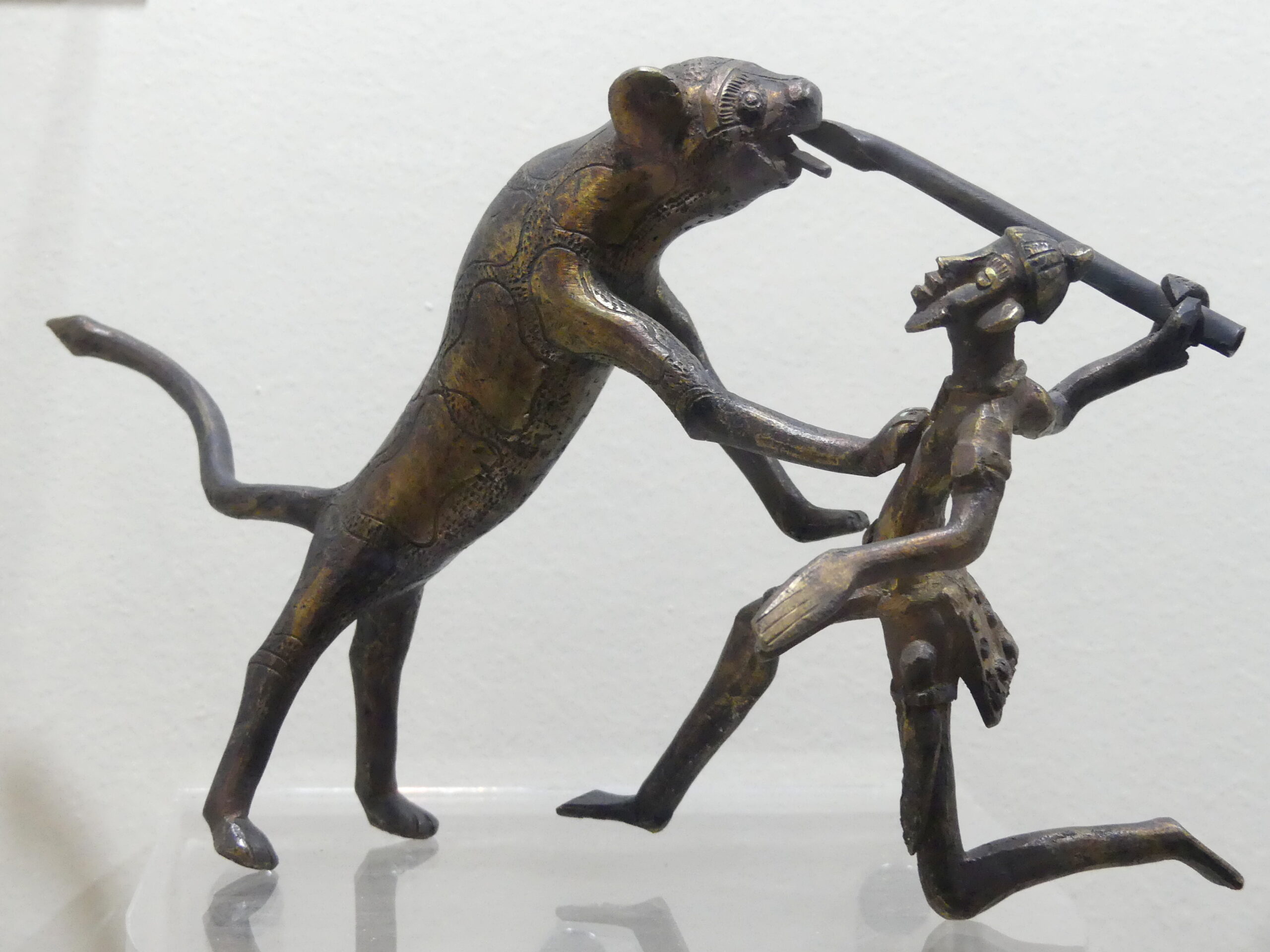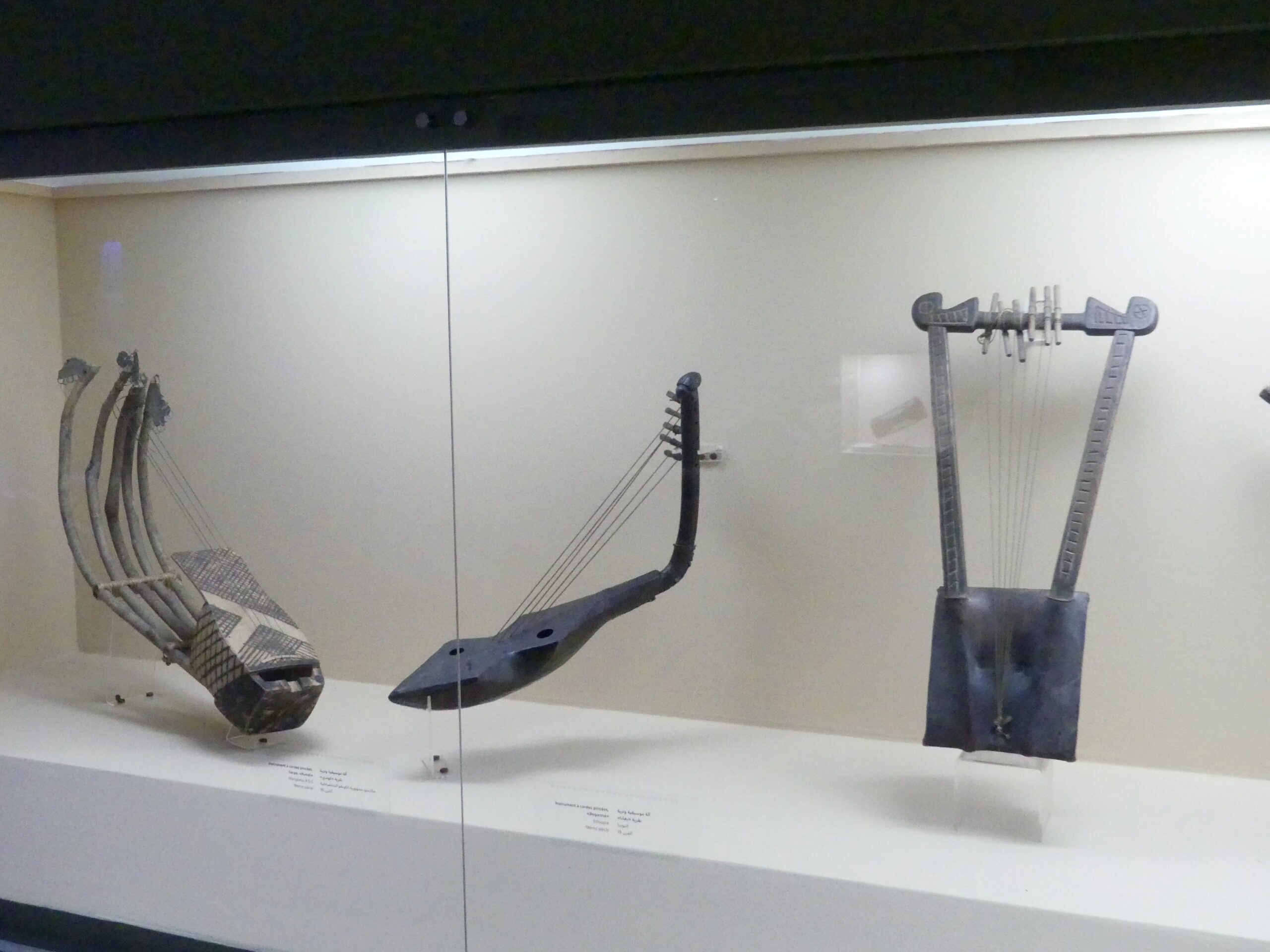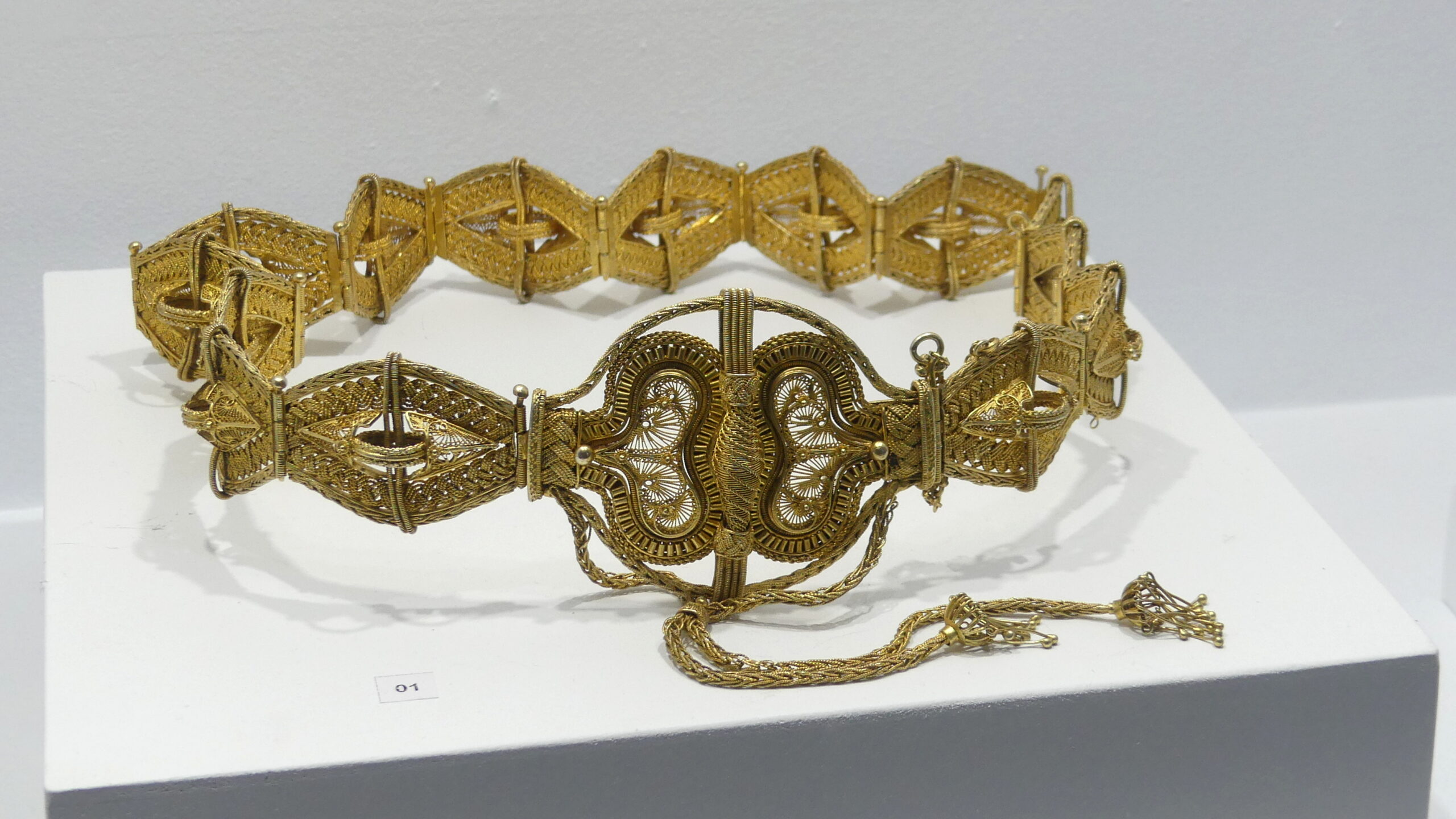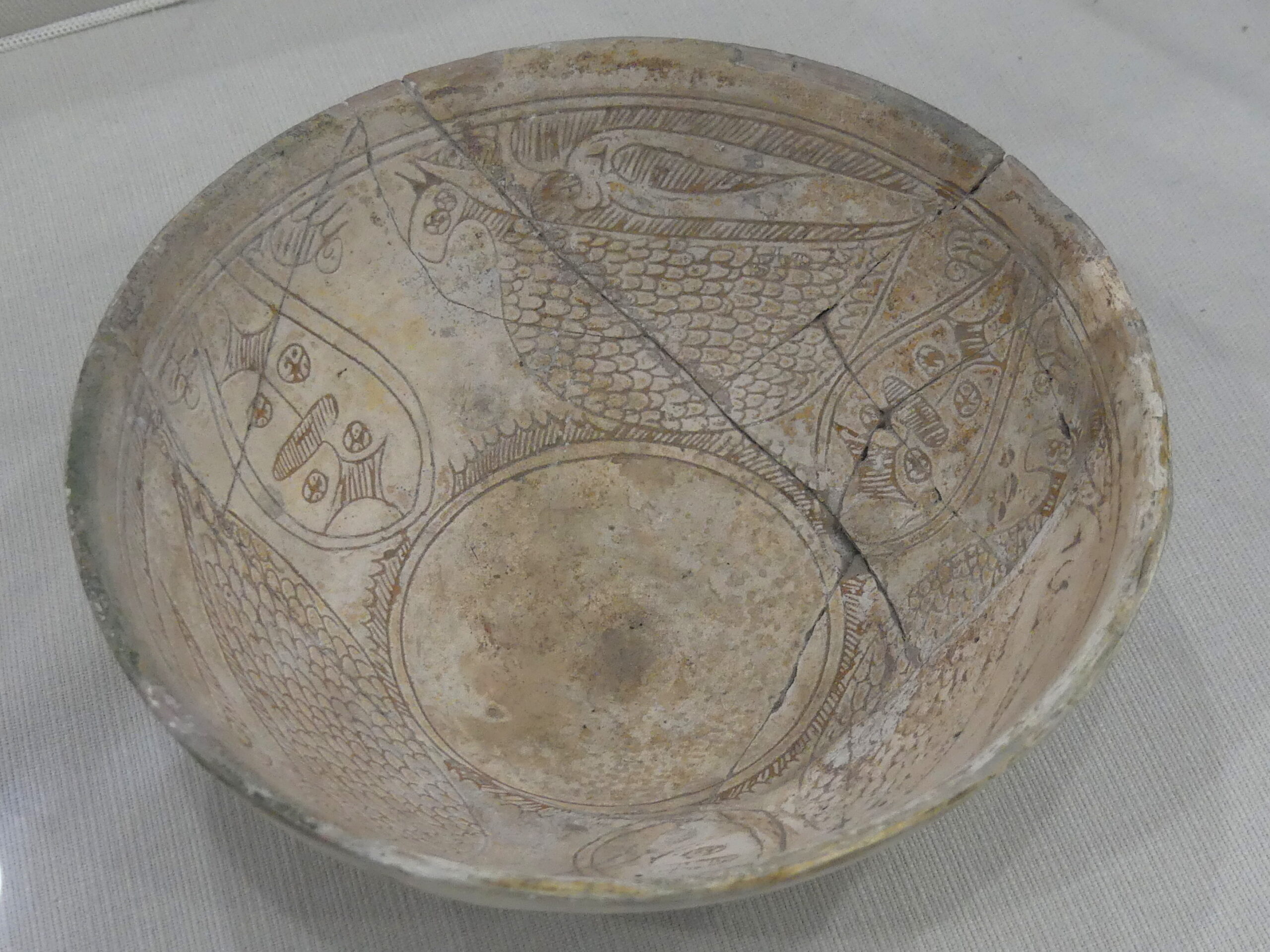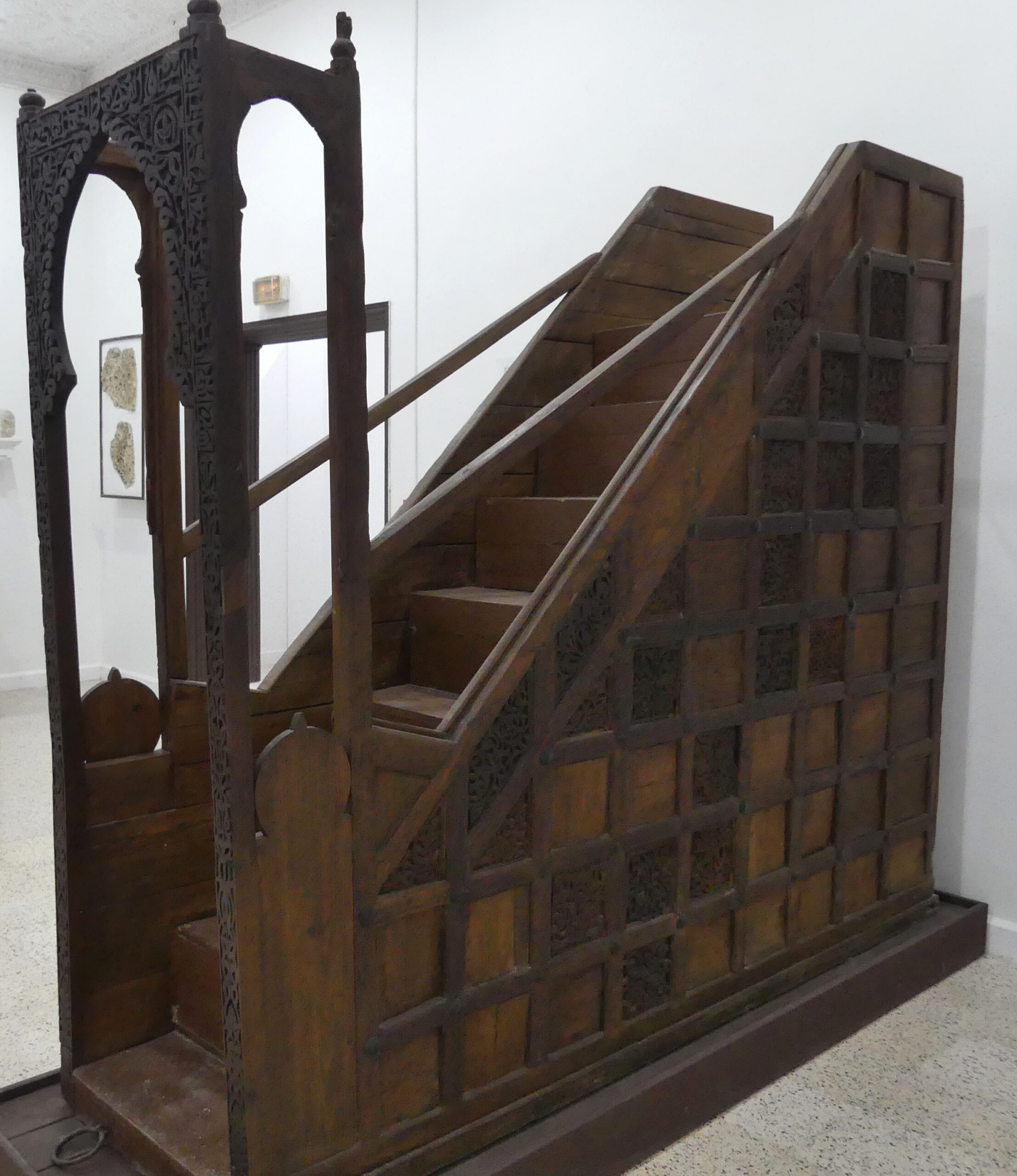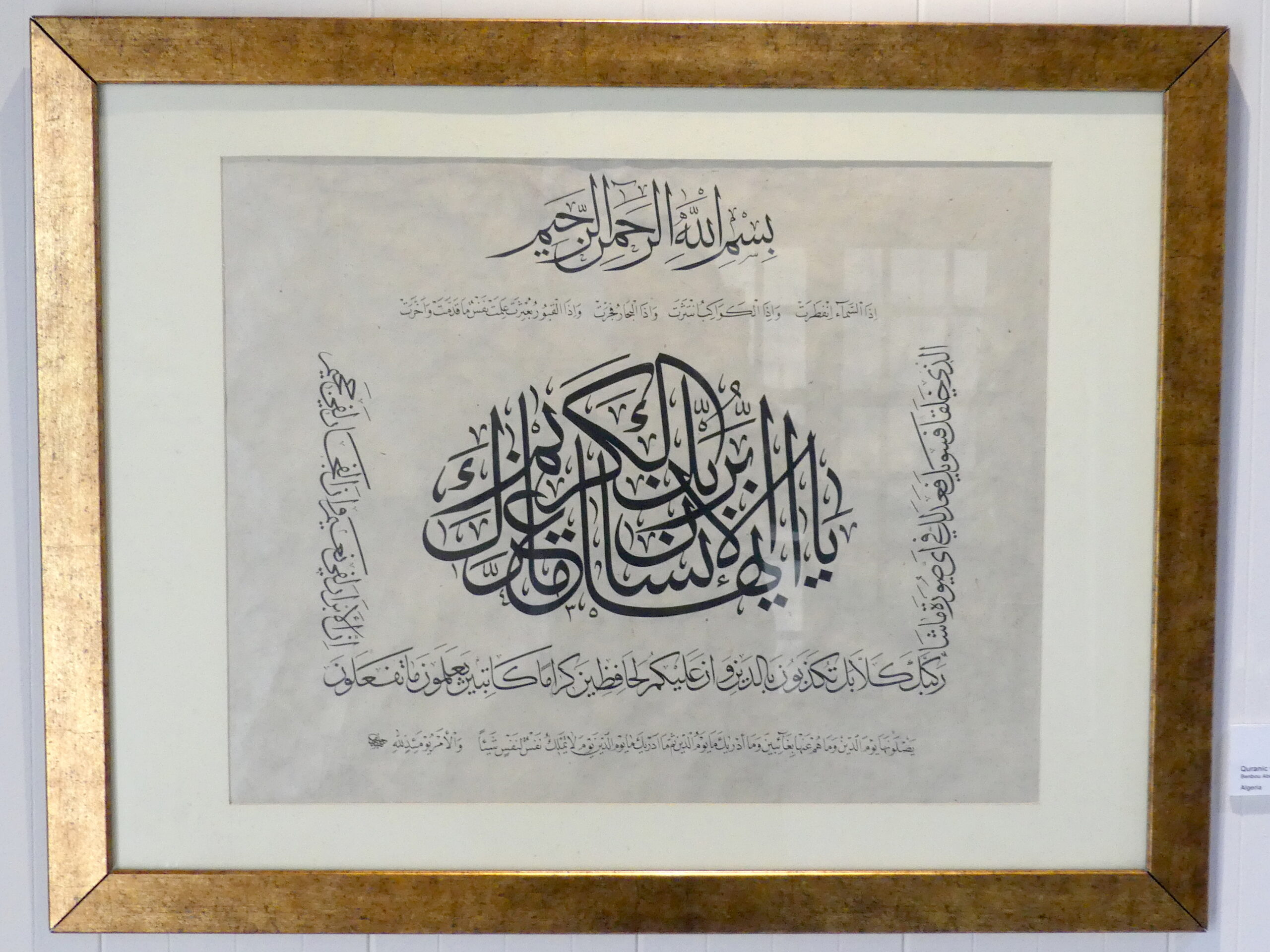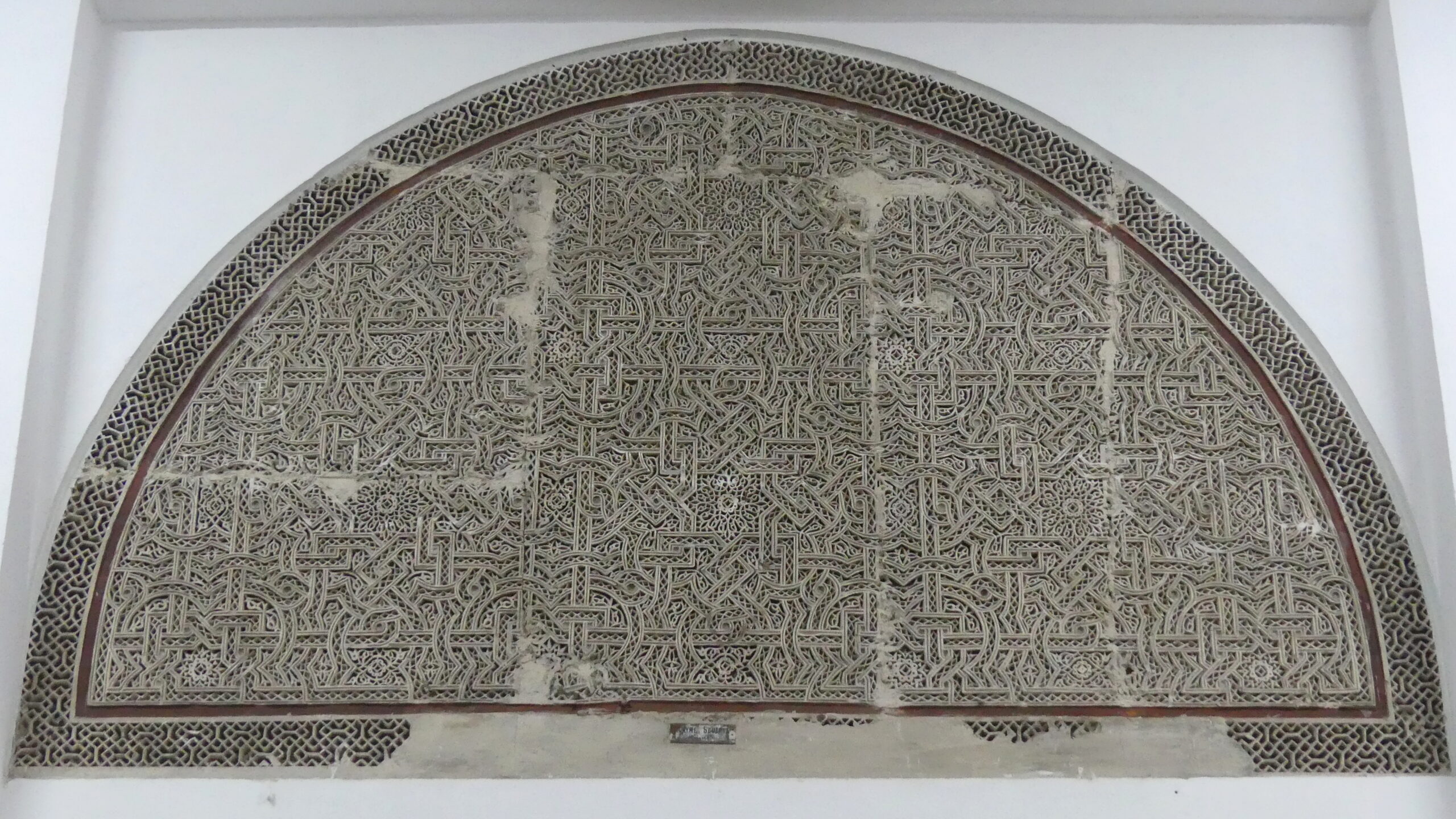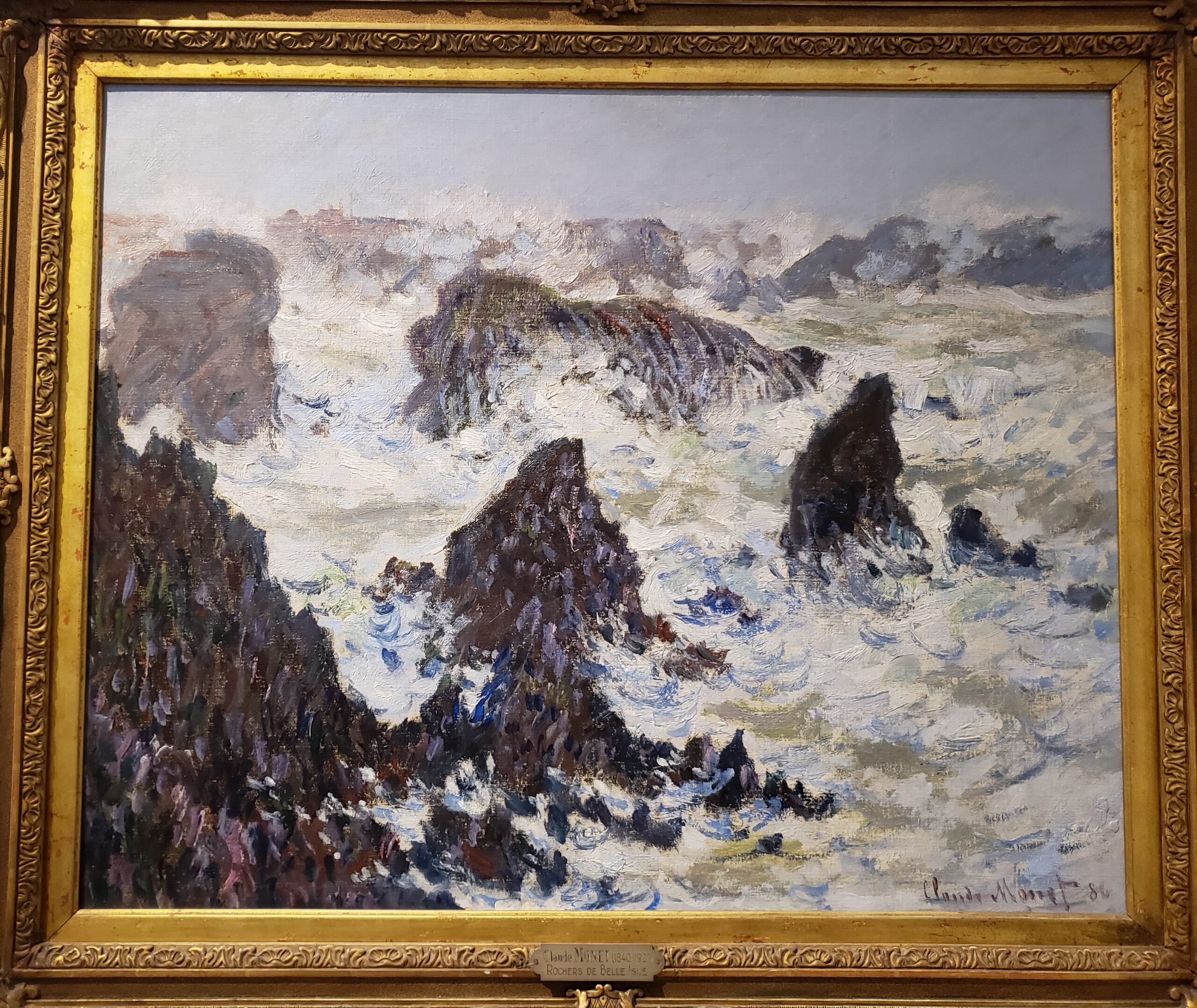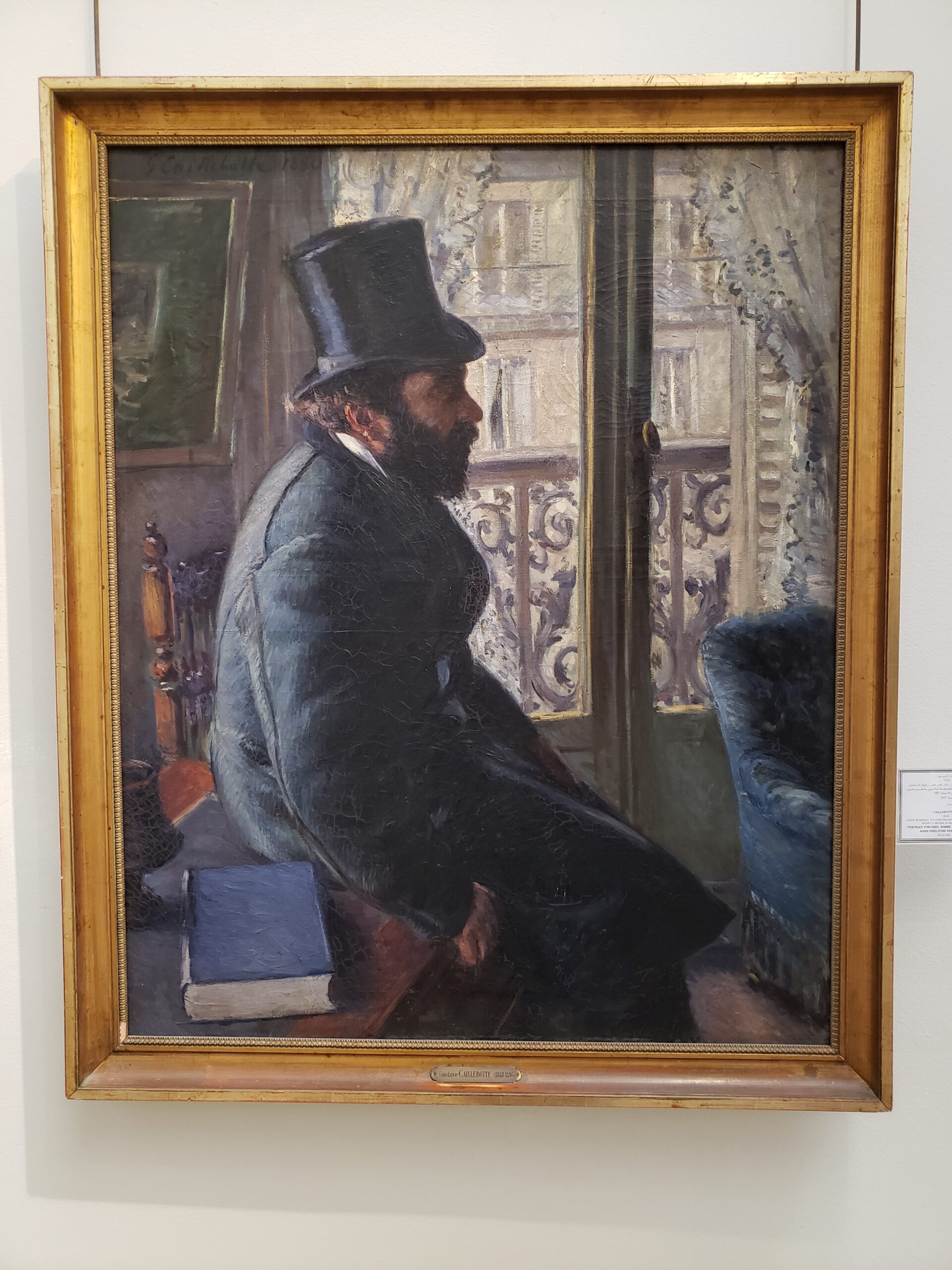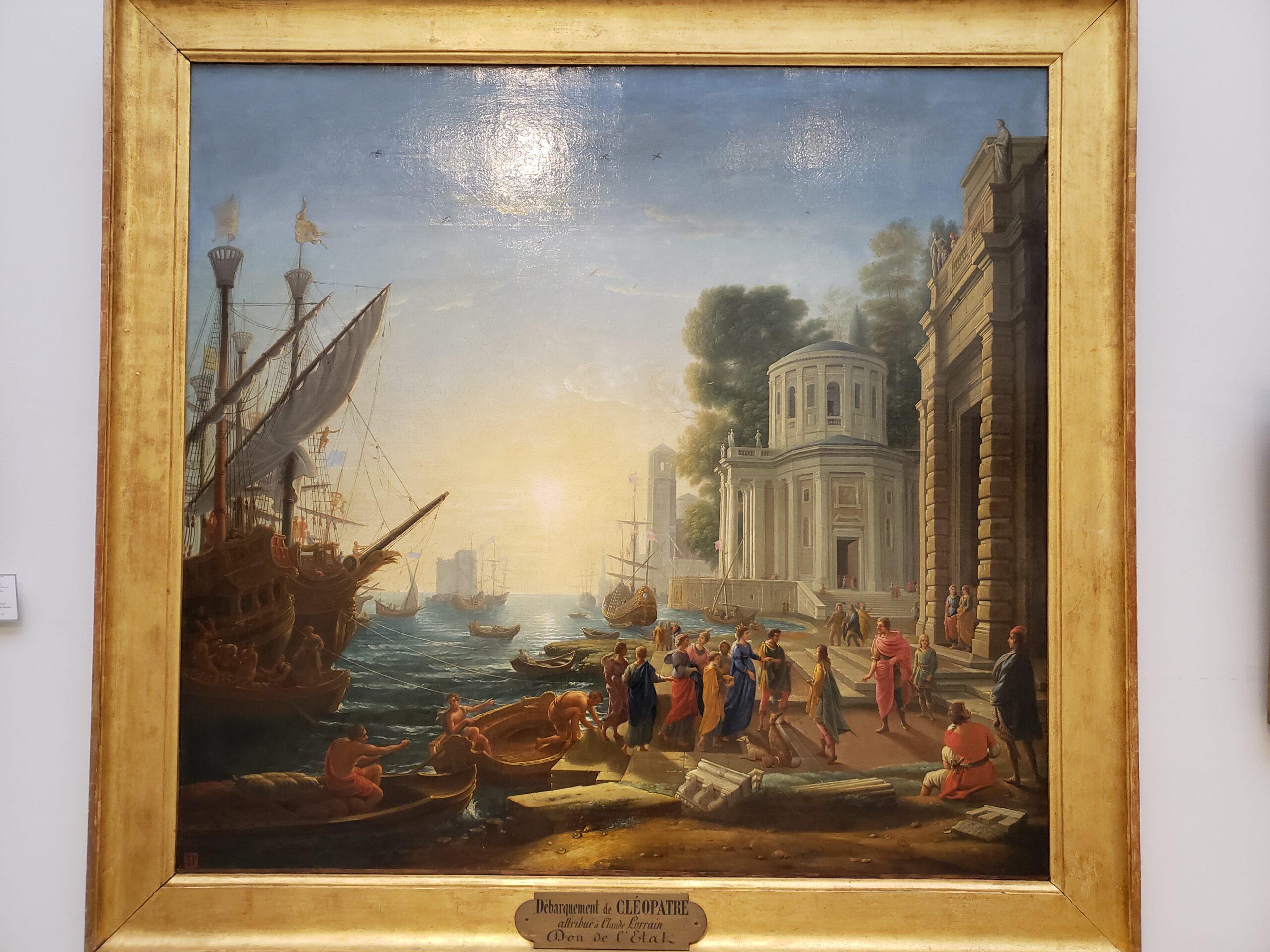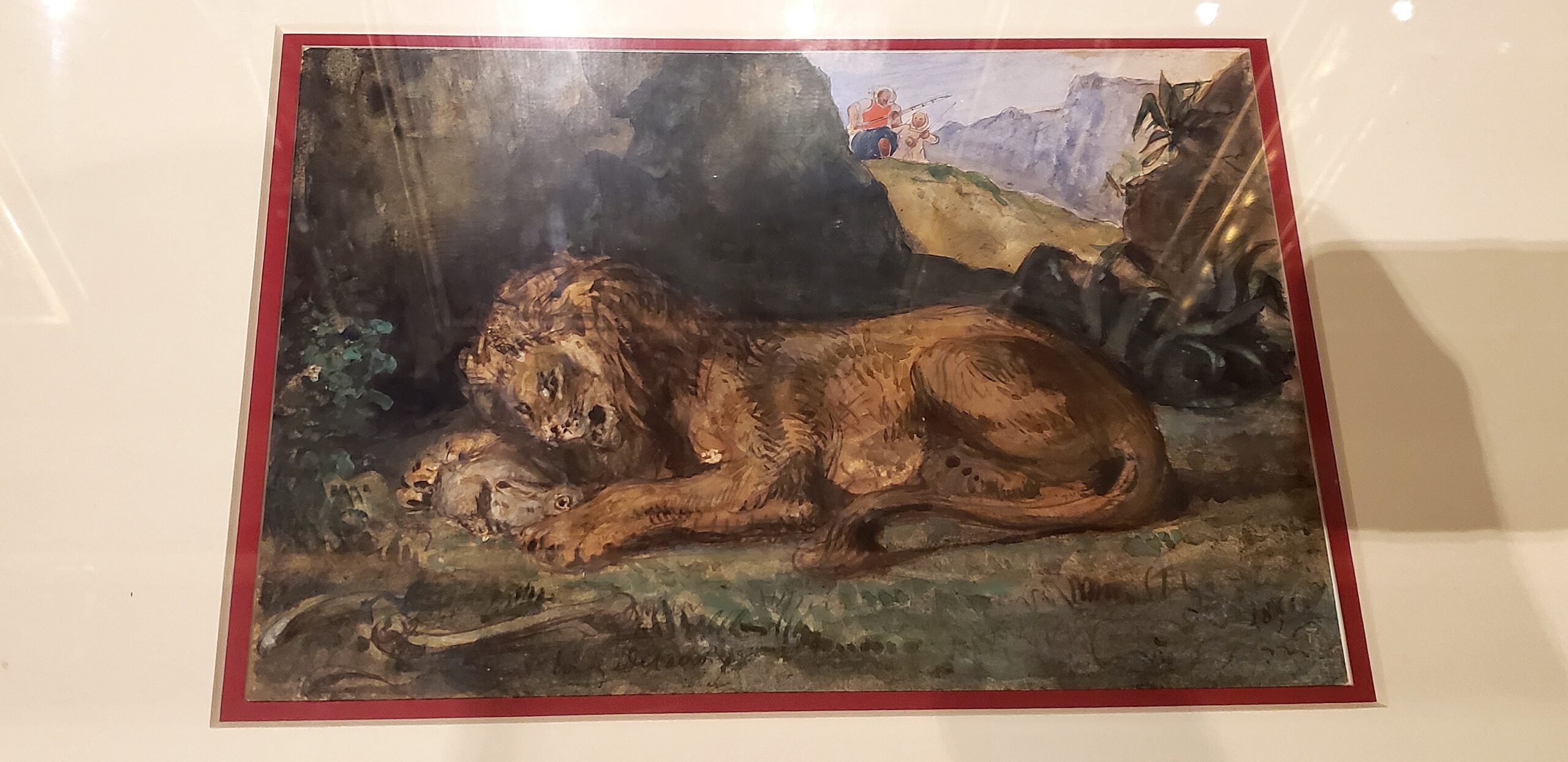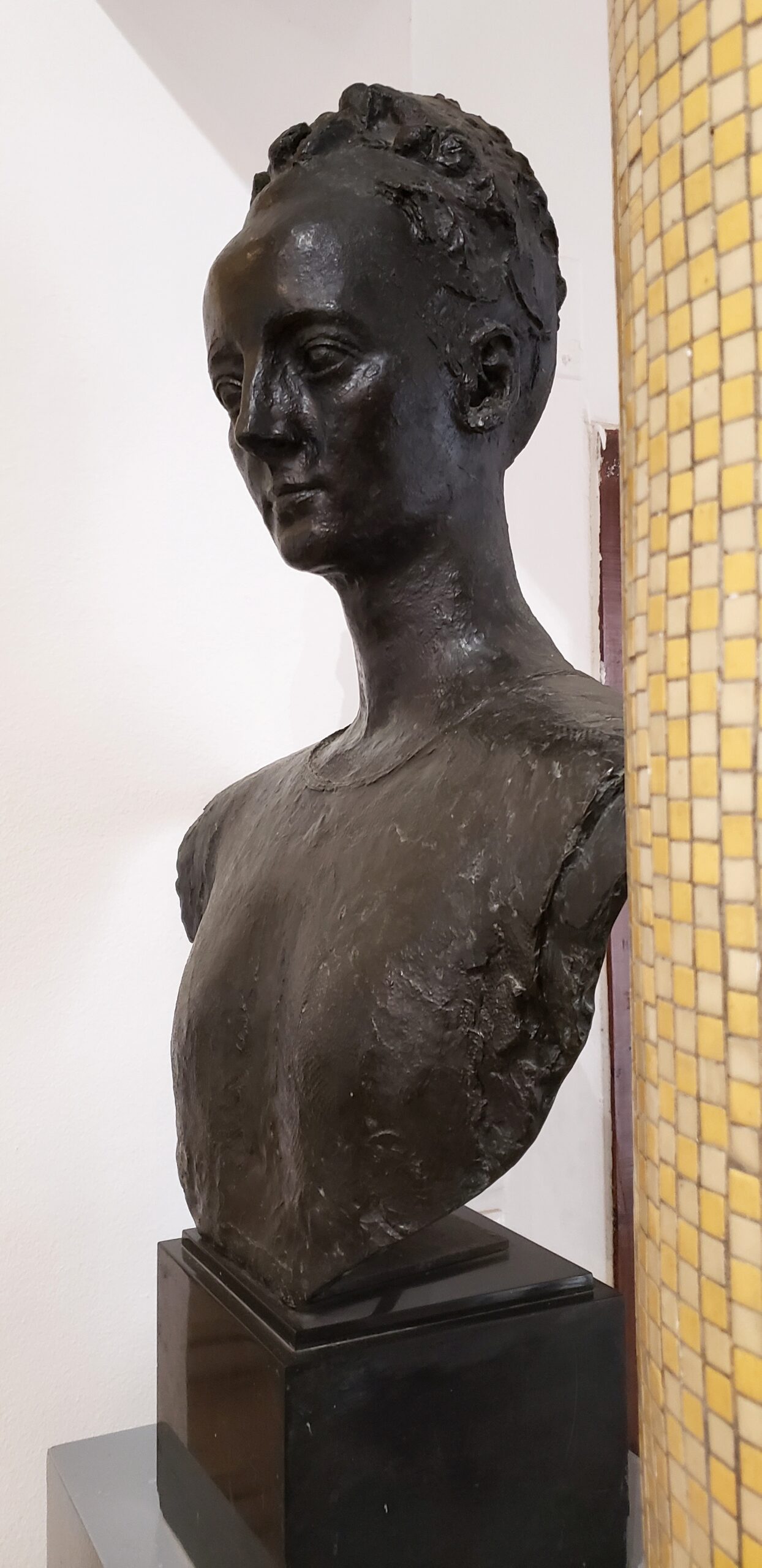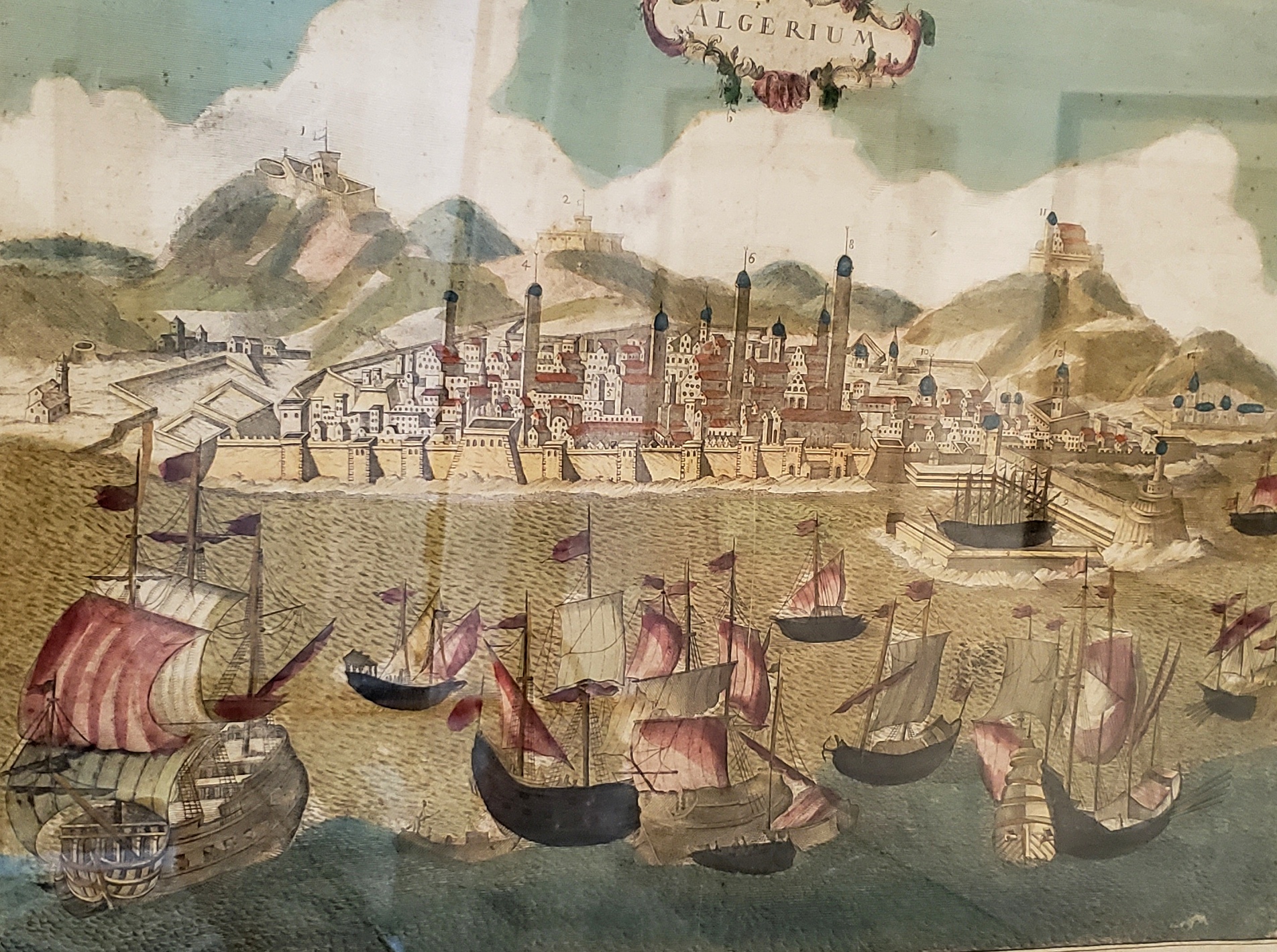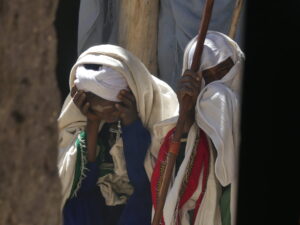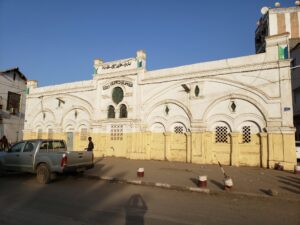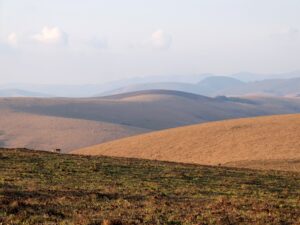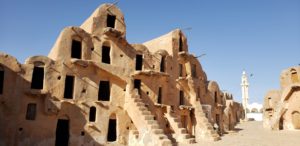The cultural monuments and museums of Algiers were impressive, but we will remember most all the people who treated us as honored guests.
During our first week in Algeria, we walked and rode extensively around Algiers, the bustling capital along the Mediterranean. We were impressed by a city (and people) with a depth of heritage, prosperity, and pride.
They welcomed us in ways large and small – treated not as strangers, but as honored guests. On our second day, after eating in a small local restaurant whose menu consisted of just a handful of items, one of the regulars insisted on buying our meal. “We are honored when you visit our country,” he said.
The City
The city itself was equally welcoming. The old parts of town seemed in good shape, with the Ottoman castle atop the Casbah under reconstruction and other buildings in the medina, as well as early 20th century French colonial buildings, well maintained.
The flat part of central Algiers runs about a half kilometer from the sea. The terrain then rises gradually in the old town up to the Casbah and more steeply to bluffs in other places. Here, along a corniche road high above the sea, is a splendid view looking north over central Algiers, with the Casbah hillside sloping down on the far left. The harbor for this northern and western part of Algiers is still quite busy commercially, little changed in that regard since the Phoenicians of nearly 3000 years ago.
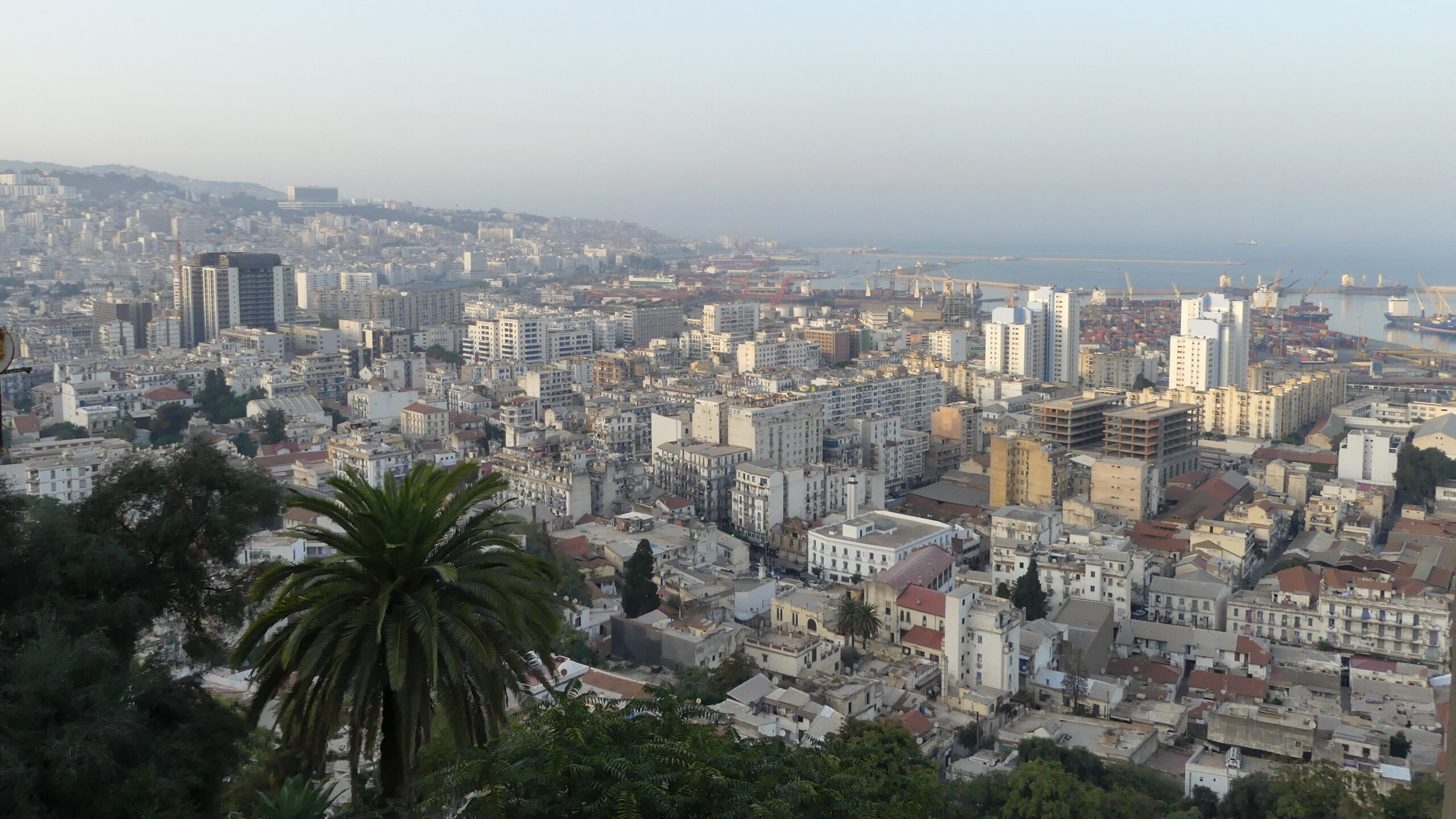
It’s not obvious – except perhaps at the lower fringe of the picture – that there is quite a lot of steep hillside parkland across the city. Such parks begin on one set of streets and climb up to another level, where you’re just as likely to find the next steep park.
One advantage is lots of exercise, but the main plus is that the parks offer a ready refuge, surprisingly isolated from the noisy car jams on the streets.
By contrast, the splendid Jardim Botanique is a huge swath of flat land near the Mediterranean west of the center city, with towering trees like palms and planes, gnarled pines, and diverse flowering plants.
Throngs of families and older students head there, especially on weekends and holidays. Below this staircase is a very formal part of the garden, occupying perhaps just a tenth of the much wilder remainder.
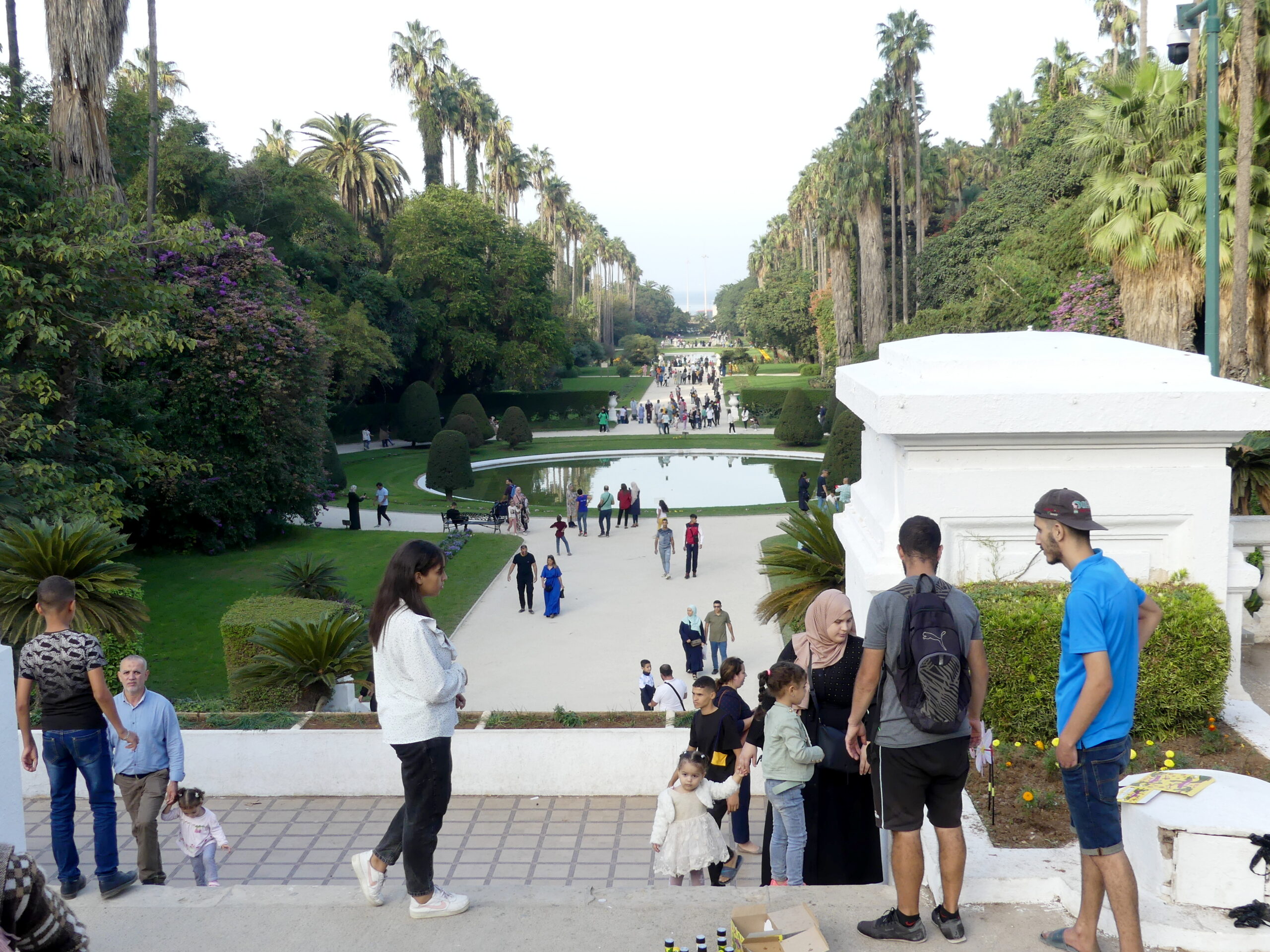
In the flatland, including one stop at the Jardim, Algiers has been able to put run a sleek and quiet subway system, with plans for extension to more of the sprawling city. When we first tried to use it, we looked a bit lost and uncertain of how payment worked. Two young women stepped in to help us and talk with us for several stops.
And extending the metro is a very good idea, even if it only serves the flatland. Up on the hillsides, the tangle of roadways makes traffic blockages inevitable. Often you’re better off climbing up and down the many stairways (and parks) that link levels of town to reach your destination…a kind of pedestrian metro.
The imprint of history is everywhere in the city, especially in the old medina, where inevitably a visit to Algiers begins. Flanked by an Ottoman building being restored on the right and a French colonial one on the left, the grand 17th century Ketchaoua mosque at the edge of the flatland just below the medina has itself experienced the changes in rulers and religions.
Begun as an Ottoman mosque about 500 years ago, it was converted to a church by the French, and then converted back to a mosque in the 1960s after the war of independence. Christian decoration added to the church was then subtly transformed to befit the mosque. As with most mosques, entrance was restricted to Muslims even outside of prayer times.
At the top of the old city and the hillside medina above the mosque sat the Casbah, which just means fort. A UNESCO World Heritage site, its protective walls once enclosed the whole hillside down to the sea, including the medina – the narrow streets of the old market and residential district. From there the city began to spread.
Dating from early Phoenician and local Numidian settlers, the medina’s streets rise and fall, twist and turn, tumble up and down staircases across the hillside until one reaches the surprisingly narrow commercial and harbor flatland below.
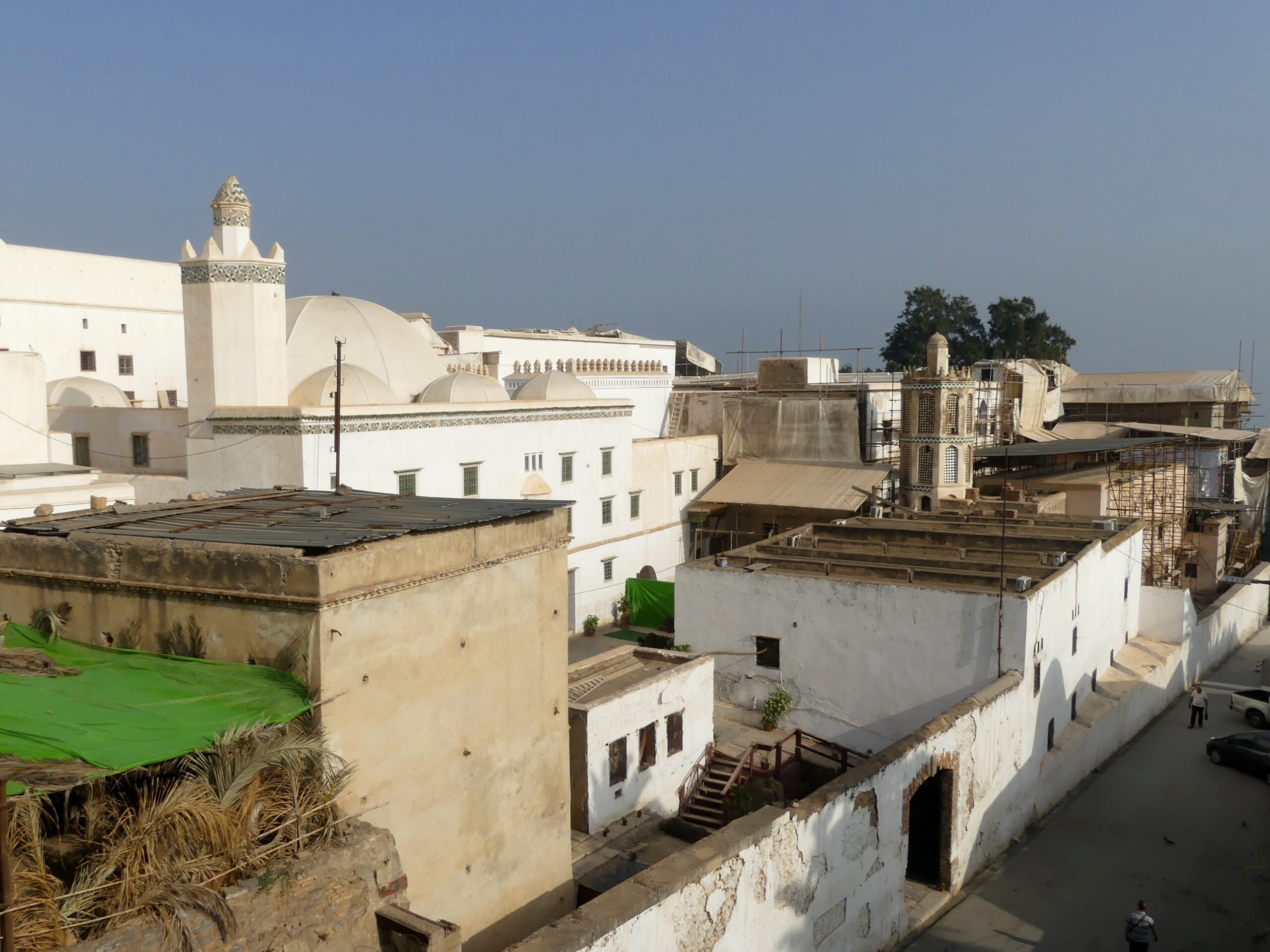
An overview of the current fort of the Casbah. Today’s buildings largely date from the Moorish and Ottoman periods. Long neglected, it is mostly closed for restoration. We could at least view the charming mosques marked by the towers in the photo and auxiliary rooms used by the guard of the local ruler, the Dey. But we could not visit the elaborate internal courtyard of the Dey, the huge rotunda called the Gunpowder building, or the hotel used to house subordinate governors when they came for meetings and paid tributes.
The rulers at any time period needed to ensure water for their people. So water stored at the top of the Casbah was channeled to numerous fountains along the way down, like this Ottoman era basin at a junction of medina streets.
However unequal the wealth and power of Algiers’ residents in the past, custom limited the overt display of these differences.
Palaces in the medina are barely noticeable from the streets, displaying the same whitewashed walls and decorated doorways as other buildings. However, once inside, the splendor is on display.
Here is the interior courtyard of the Mustapha Pacha palace from the Ottoman era in the 17th century. The palace was large enough to occupy two buildings spanning a narrow street.
The streets of any medina in the Maghreb are also lively marketplaces. In Algiers, we found the people there very hospitable. Stalls line the streets (and even impede passage when they can) to offer throngs of buyers anything they need to buy. This colorful stall was less busy than many of the clothing ones. Turn a corner and you’re at the food stalls. With its French connection, Algeria maintains a tradition of fine cheese. We spent 20 minutes tasting delicious soft and hard cheeses at one counter (the local camembert and goat cheese are rightly renowned). The welcoming owner kept presenting us with other delicacies to try.
For many kilometers along the northern part of the city, the bluffs overlooking the Mediterranean are lined with these elegant French colonial buildings. By the early 20th century, the French formed a majority of Algier’s residents. It’s quite a spectacle from the sea level. This section is near a large fishing port where vessels of various sizes deliver their daily catch to the fishmongers and wholesalers nearby.
Within nearby districts like Bab El Oued (or River Gate) just north of the Casbah, vintage colonial buildings like this are still fully occupied. Their wrought iron porches are usually festooned with drapes that shade the interior and ensure some privacy. Often the day’s laundry emerges to dry in the sunshine. Though some looked a bit run down, most seemed kept in good shape even though this was one of those districts that the locals like to warn one about.
And it was no less friendly. At a local park, a half-dozen pensioners were preoccupied with a game of dominoes but were pleased to talk with us when we drifted over to see what was going on. Even the top player according to the group (with the hat on the left) stopped playing for a while to find out more about us.
On another day, we managed to find a table at a very, very busy restaurant in the downtown Algiers district. To our left, two slender sisters had ordered, to their surprise, a couple of platters heaped with chicken wings, french fries, and other heavy foods. Over time, they ate most of it! Soon, they were joined by a young male friend whose arrival stirred an hour-long conversation with us about life in Algeria and in travel, plus a lot of smiles.
Museums
Algeria has long been at the confluence of numerous cultures, old and new: Phoenician, Punic, Numidian, Roman, Vandal, Byzantine, Arabic, Christian, Spanish, Ottoman, and French – to name a few. Unsurprisingly, it has accumulated numerous treasures that draw on that 2500 year heritage, displayed proudly at its many museums. Here are just some of the special pieces we found around the capital Algiers.
Museum of Antiquities
From the 4th century BC, some 2300 years ago, comes this water jug from Algeria replete with Phoenician or Greek figures.
The Museum of Antiquities displays a thrilling collection of coins from the Numidians of 2300 years ago through the Ottomans up to 200 years ago.
This shows the profile of the notable Numidian king, Juba II, whose successful 53 year reign spanned the birth of Christ. His wife was the daughter of Antony and Cleopatra (yes, that Antony and Cleopatra).
In this striking mosaic, Oceanus, god of the sea, is surrounded by nymphs on seahorses and other marine creatures. The inscription exudes confidence in its quality and exorts us to take joy in the work, noting the envious hearts of those who see it. “For in this work we surpass our ancestors” and, along with the building around it, “the highest summit of art shines agreeably. Be happy.” But why doesn’t Oceanus look happier?
3rd century Roman ceremonial mask in bronze from Algeria
One room at the Museum of Antiquities shows part of the collection, with a Grecian-style statue of a one-legged Hercules in the foreground.
This mosaic was discovered along with that stone casket. The inscription on the casket quotes the entombed Cornelius about his own death precisely at the age of 28 years, 10 months, 12 days, and 9 hours. The mosaic suggests the death occurred after some effort to avoid it.
While ducks and pheasants keep watch over medicinal bowls, and with the support of sea giants, a doctor does his best to cure Cornelius, who did look very unwell. The swaddled figure at the top, sadly, shows the outcome. The Greek epigram below the circle adds enigmatically, “I was not. I have been. I am not. I don’t care.”
From the Byzantine period, this odd architectural fragment shows the biblical Daniel, calm and even celebratory, about to tame some feisty lions.
Bardo
Ironically, we were unable to visit the famous Bardo museum in Tunis with its collection of magnificent antiquities. That was too close to off-limits government buildings there.
The Bardo is not nearly the same in Algiers, but at least it was open. The museum is a former palace that explains the lifestyle of imperial Muslim tribes and the Ottoman era.
Its exhibitions included a wide-ranging collection of African sculpture from around the continent, with extensive explanation of how the masks, totems, and other objects were used. This striking “Contest between man and beast” comes from Burkina Faso, in western Africa.
The African displays included a variety of stringed instruments from around the continent. One seemed to have dozens of strings to sound out.
This delicate gold belt from Algeria was likely featured in a wedding ceremony, but now gleams at the Bardo.
Museum of Islamic Art
A 10th century bowl from Iran, in the Museum of Islamic Art, served up a strangely modern set of images.
This 11th century preaching pulpit from the Almoravide empire graced the Grand Mosque in Algiers. Set on wheels, it was moved into the mosque along a rail from a storage niche – as in many other old mosques.
The Almoravide empire was based in Morocco but extended across southern Spain and Portugal, as well as northern Africa. The Islamic museum took us through the various Islamic eras from the 8th to the 20th century, with interesting artifacts from most of them.
This Koran excerpt from Algeria is one of the many examples of Arabic calligraphy displayed at the palace of Hammouda Pacha in the Algiers Casbah. As figural art was limited to geometric adaptations of plant life, Islamic artists devoted much effort to beautification of the language itself.
An intricately carved semi-circle, set above a doorway in the museum, demonstrated the sublime skill of Moorish artists.
Musee des Beaux Arts
An unexpected treasure trove is on view at the huge Beaux Arts museum, whose 3rd floor terrace enjoys a panorama over the Jardim Botanique and parts of the city.
The museum offers an extensive collection of excellent work by European Impressionists and Modernists.
- Rodin, Pissarro, Gauguin, Degas, Millet, Vuillard, Derain, Utrillo, Fantin-Latour, Caillebotte, Bonnard, Monet, Renoir, Picasso, Maillol
It also displays quite a bounty of earlier Western art back through the medieval period – gifts, we presumed, from French collectors and philanthropists before Independence.
- Barnaba da Modena, Florentine Renaissance, Corot, Levy, Delacroix, Carpeaux, Lorrain, Ter Bruggen, Rembrandt, Courbet, David, Guardi, Piranesi
There are great examples from other Western painters who were particularly drawn to the exoticism and cultural differences they found locally:
- Delacroix, Bourdelle, Lazerges, Sintés, Dinet-Etienne,
Plus French/Algerians drawing directly from local influences:
- Lebourg, Belmondo, Rayess, Demagh, Boukerche, Adane
And, just in case one was bored, charming Ottoman-era prints intoxicated with color and mysticism, old maps of Algiers and its fortress Casbah, as well as Algerian and African sculptors on the lower floors.
We expected to stay an hour but dawdled for nearly three instead. And we were glad that the ousting of the French after independence had not effaced interest in their legacy within the museum.
With colonial buildings all over town, Algerians seem to have reconciled themselves to accepting what still had value for today’s citizens, while never forgetting the troubled legacy of colonial occupation.
(To enlarge any picture above, click on it. Also, for more pictures from Algeria, CLICK HERE to view the slideshow at the end of the itinerary page.)


